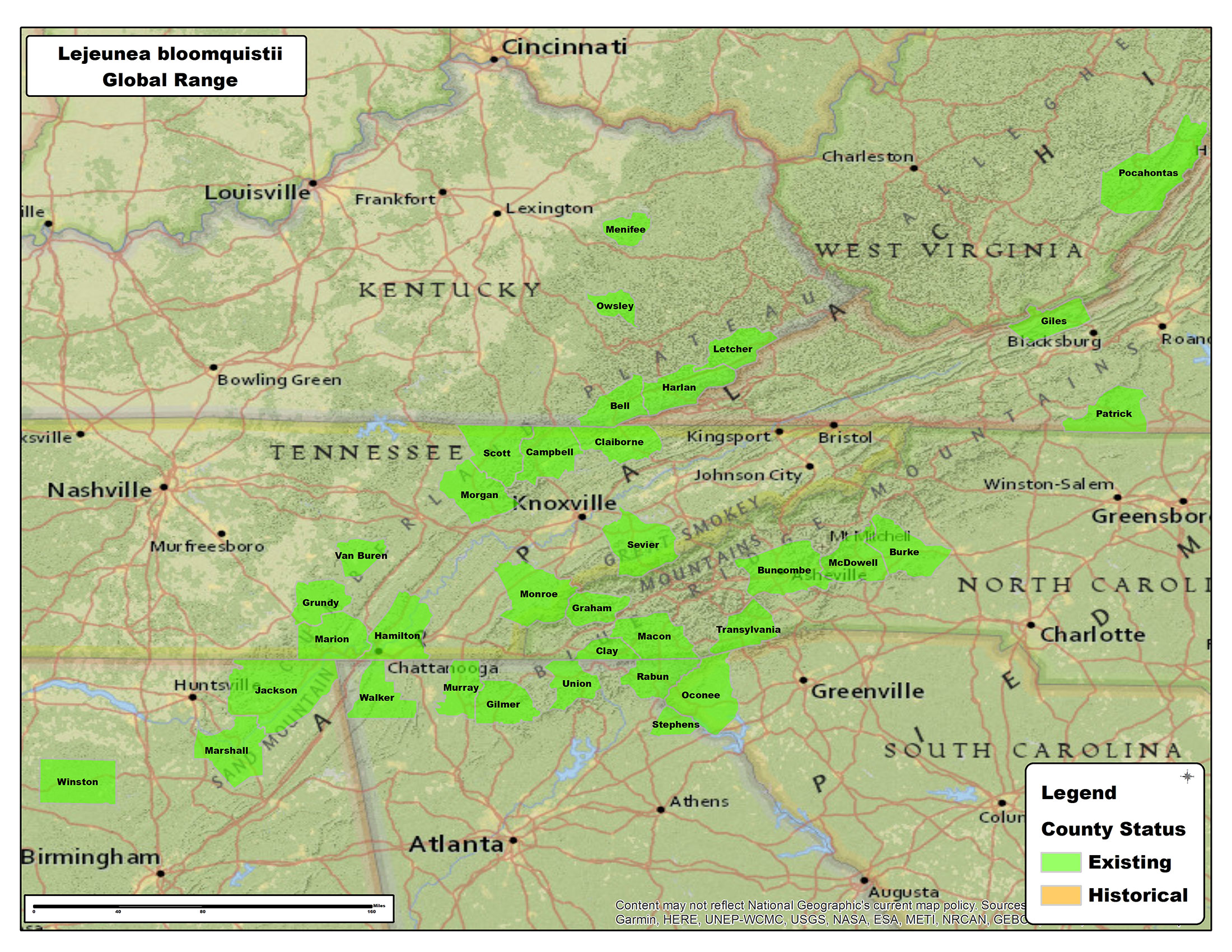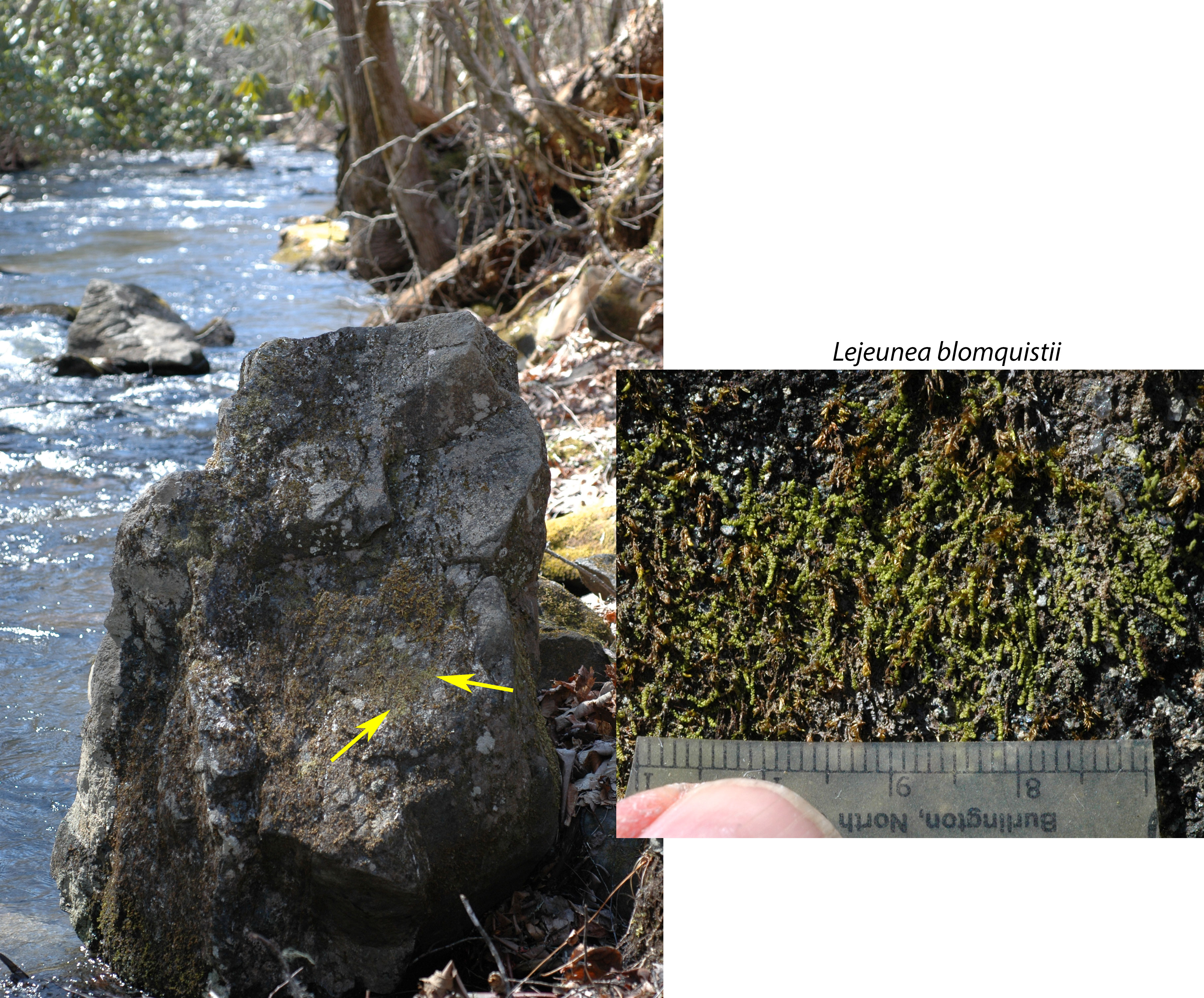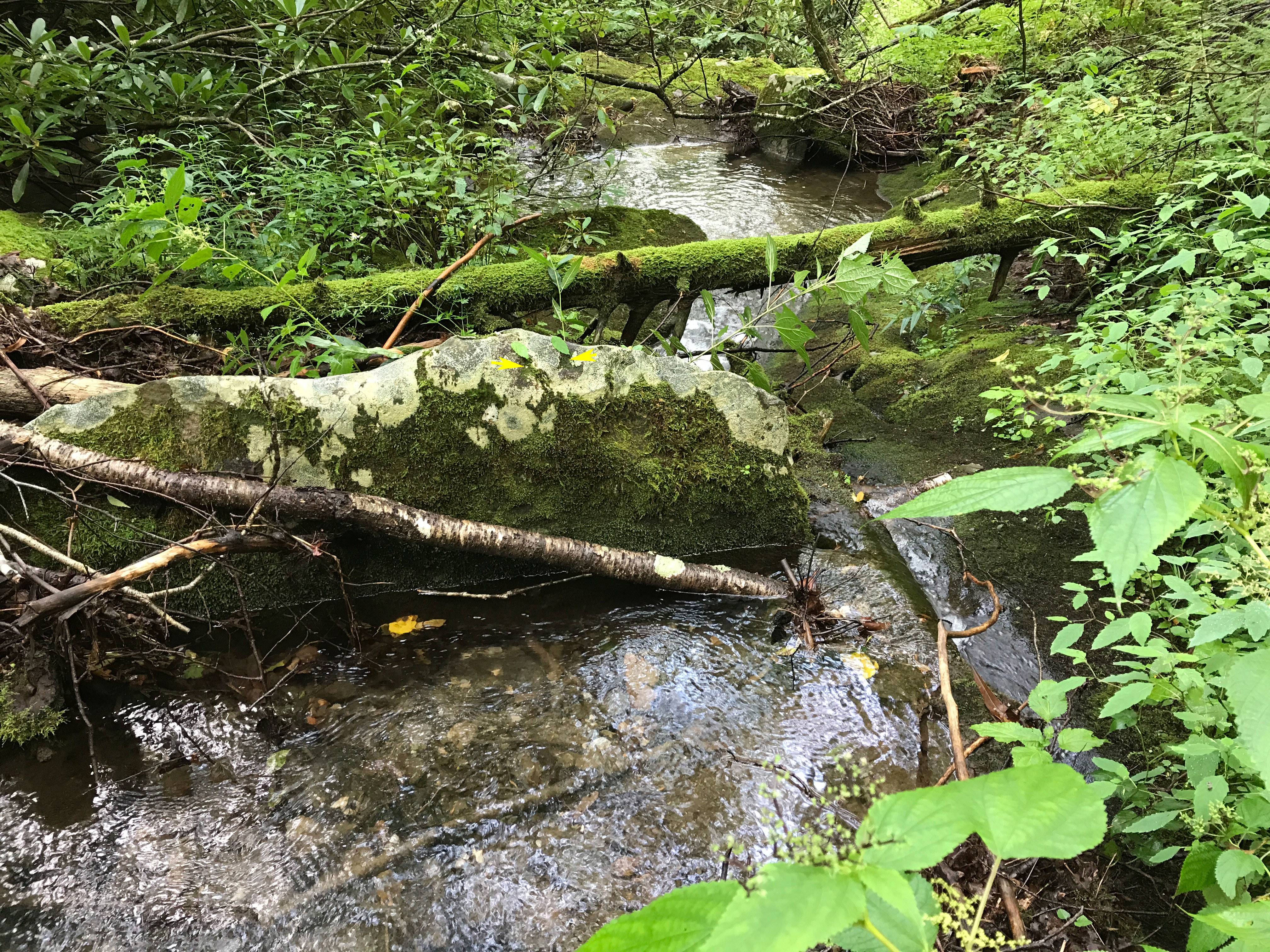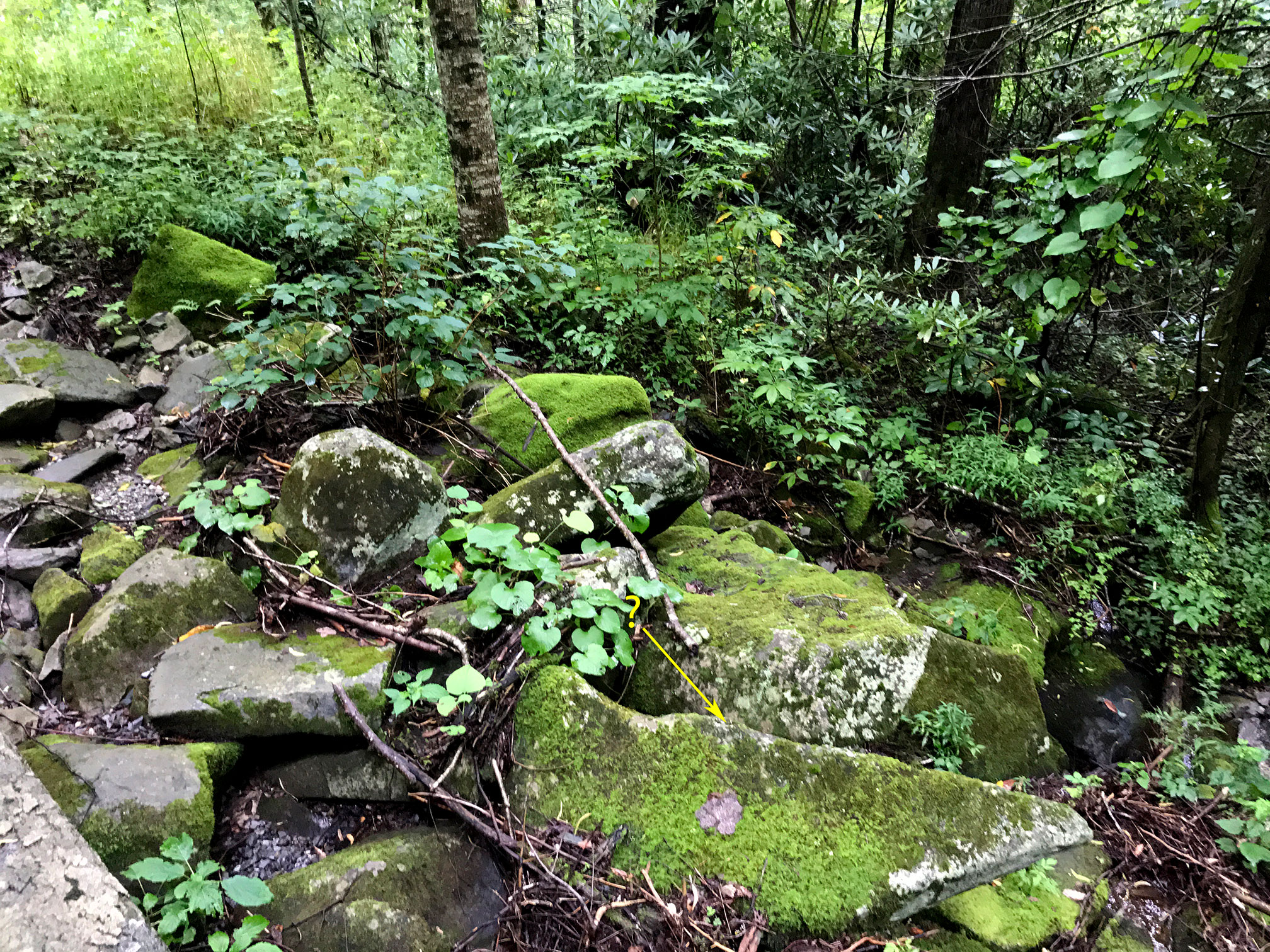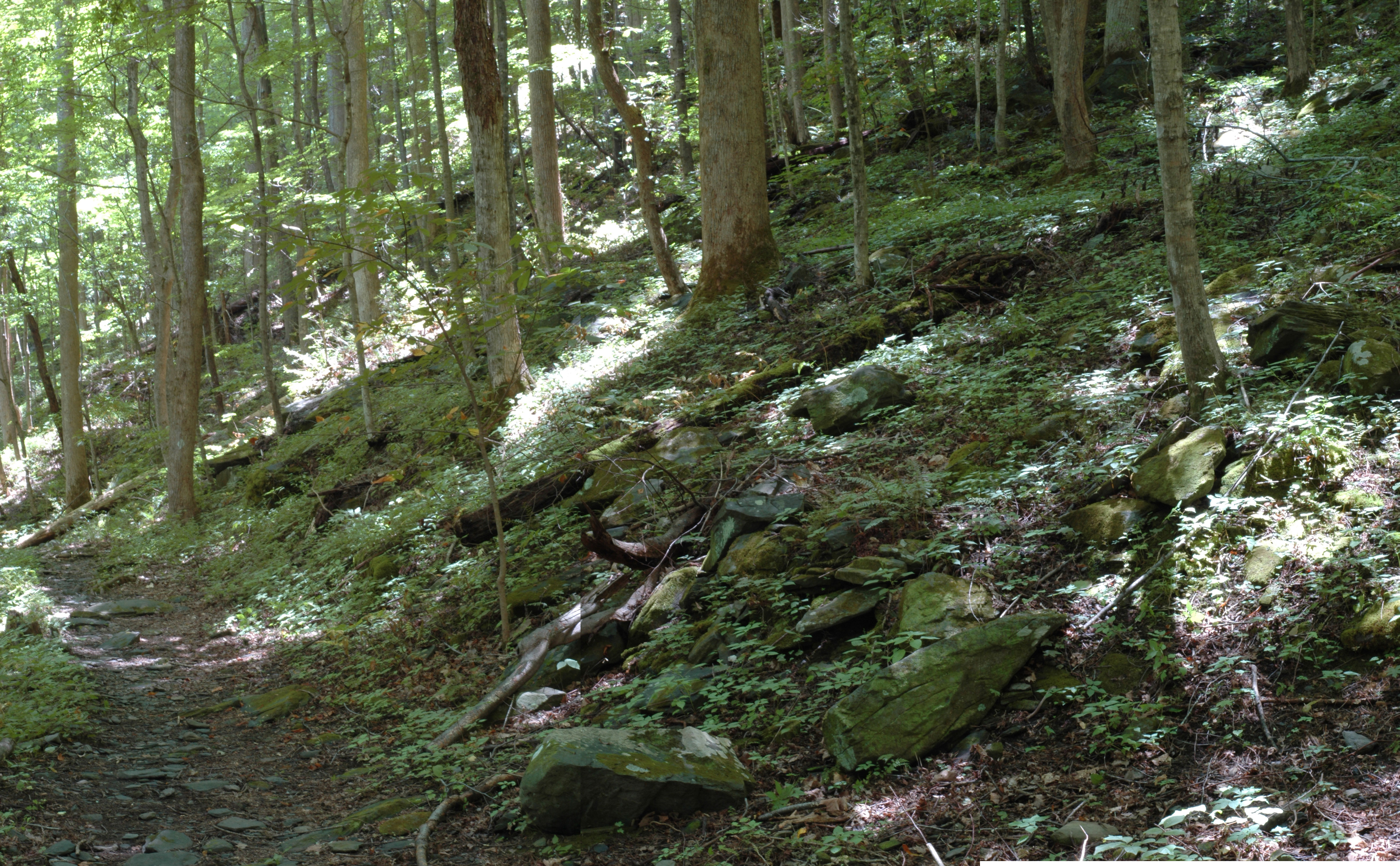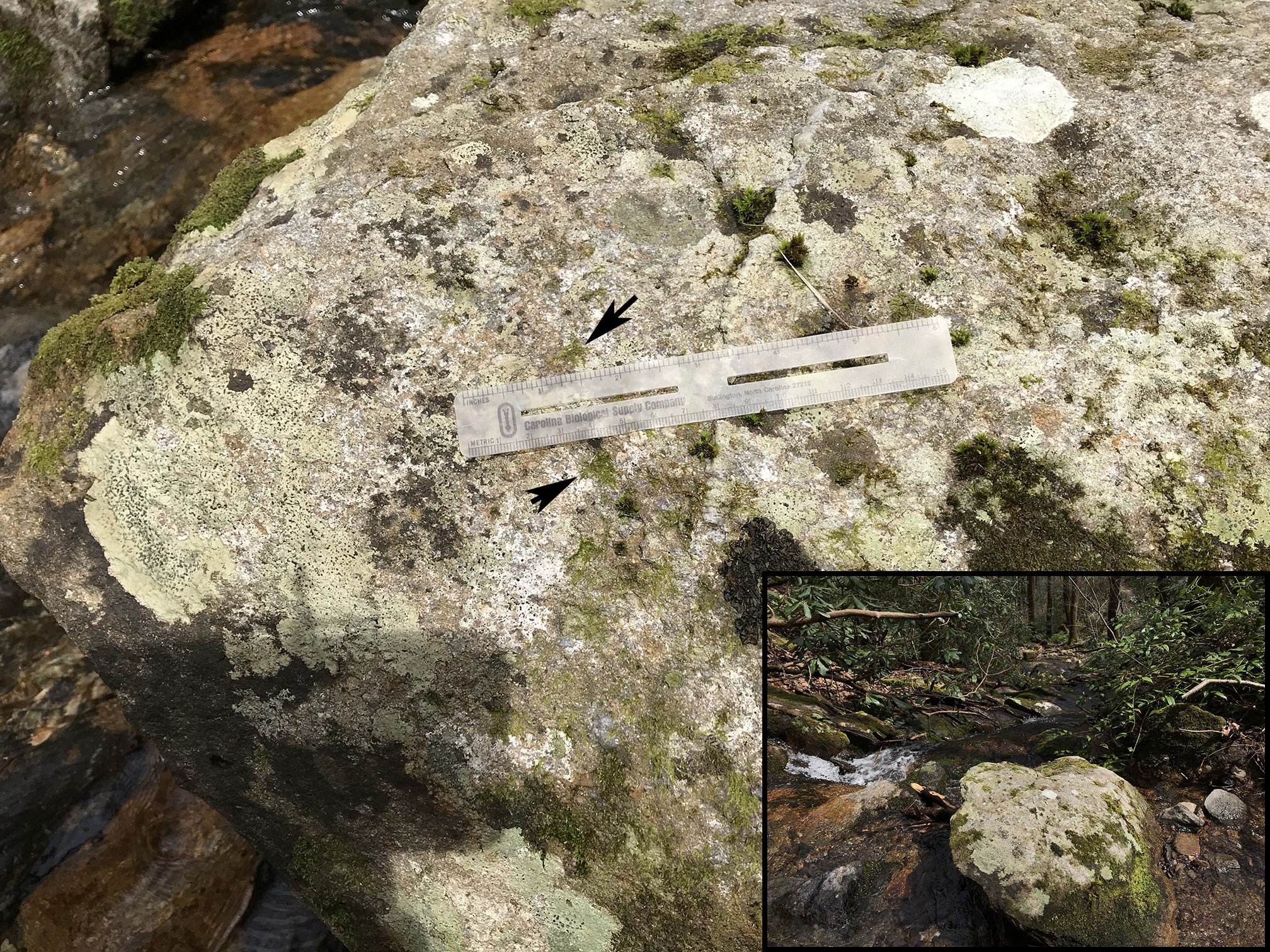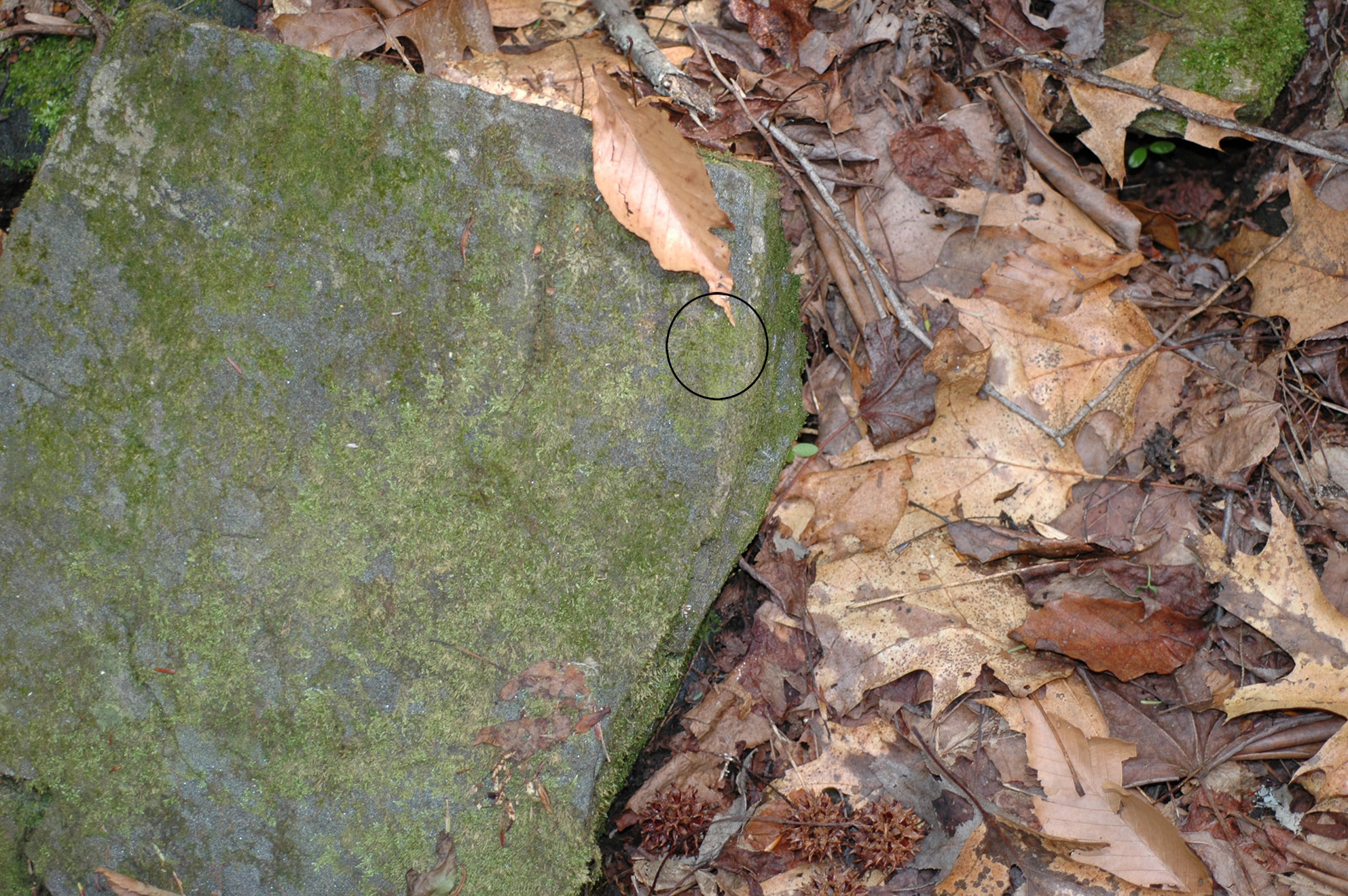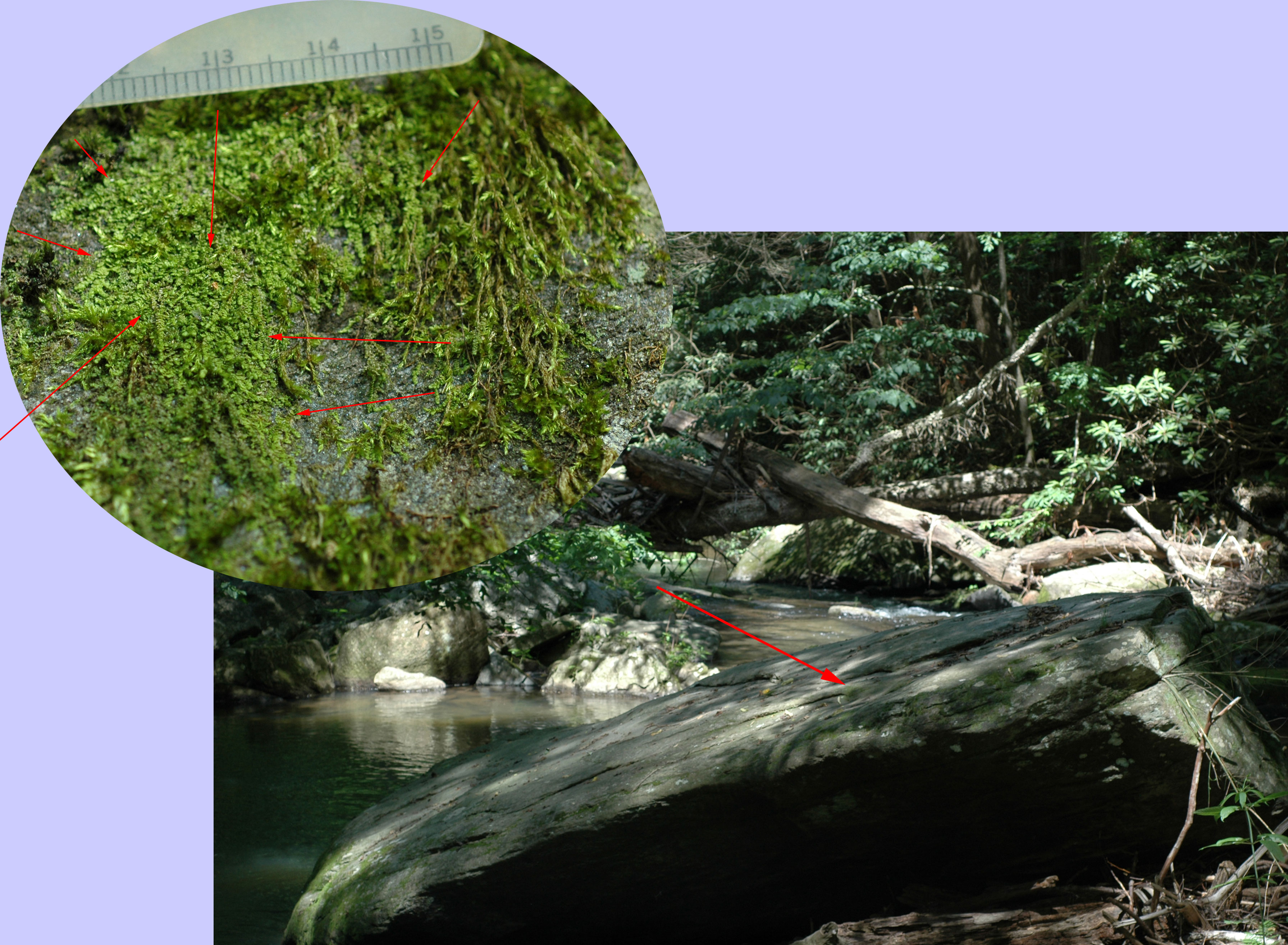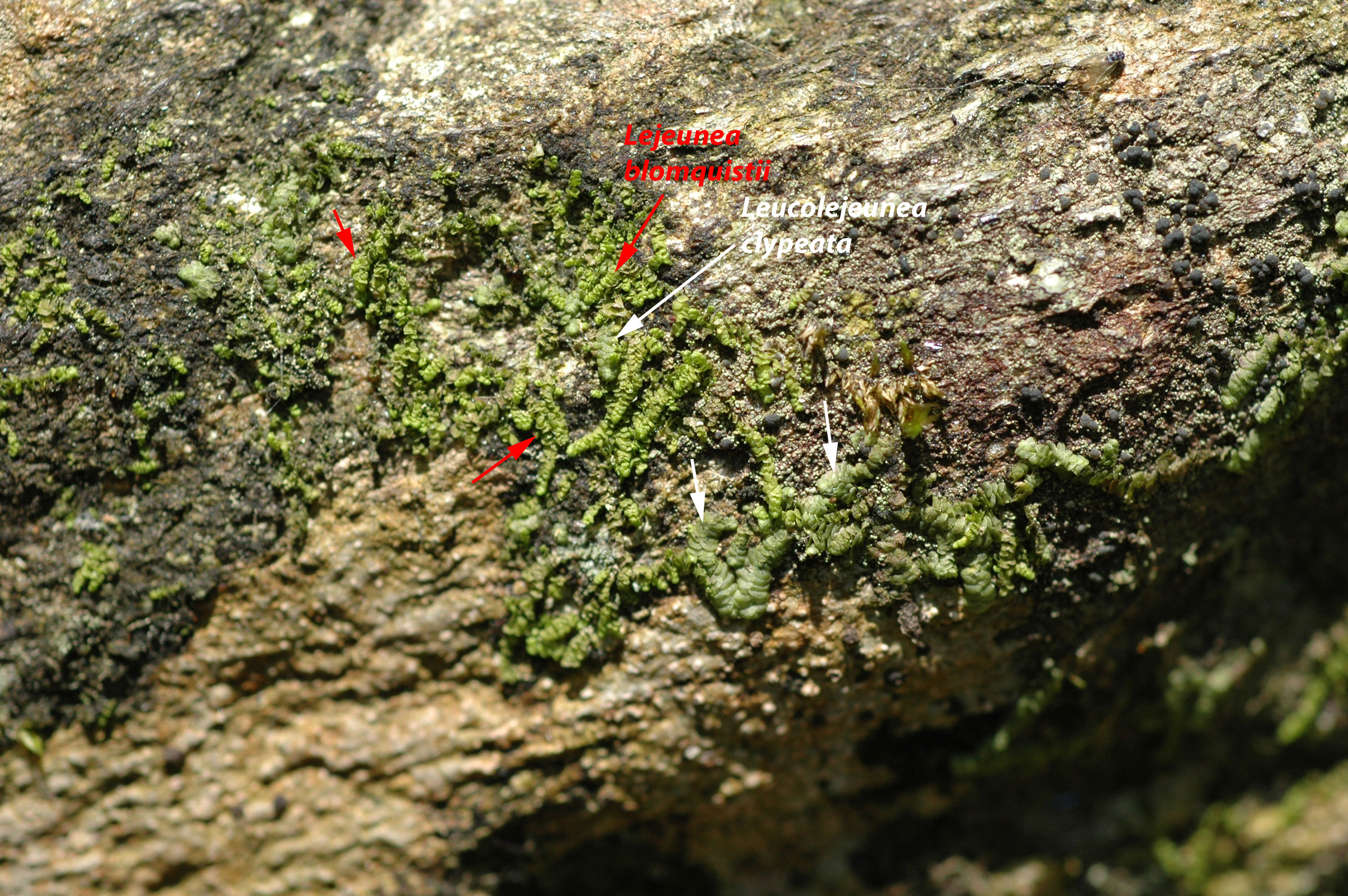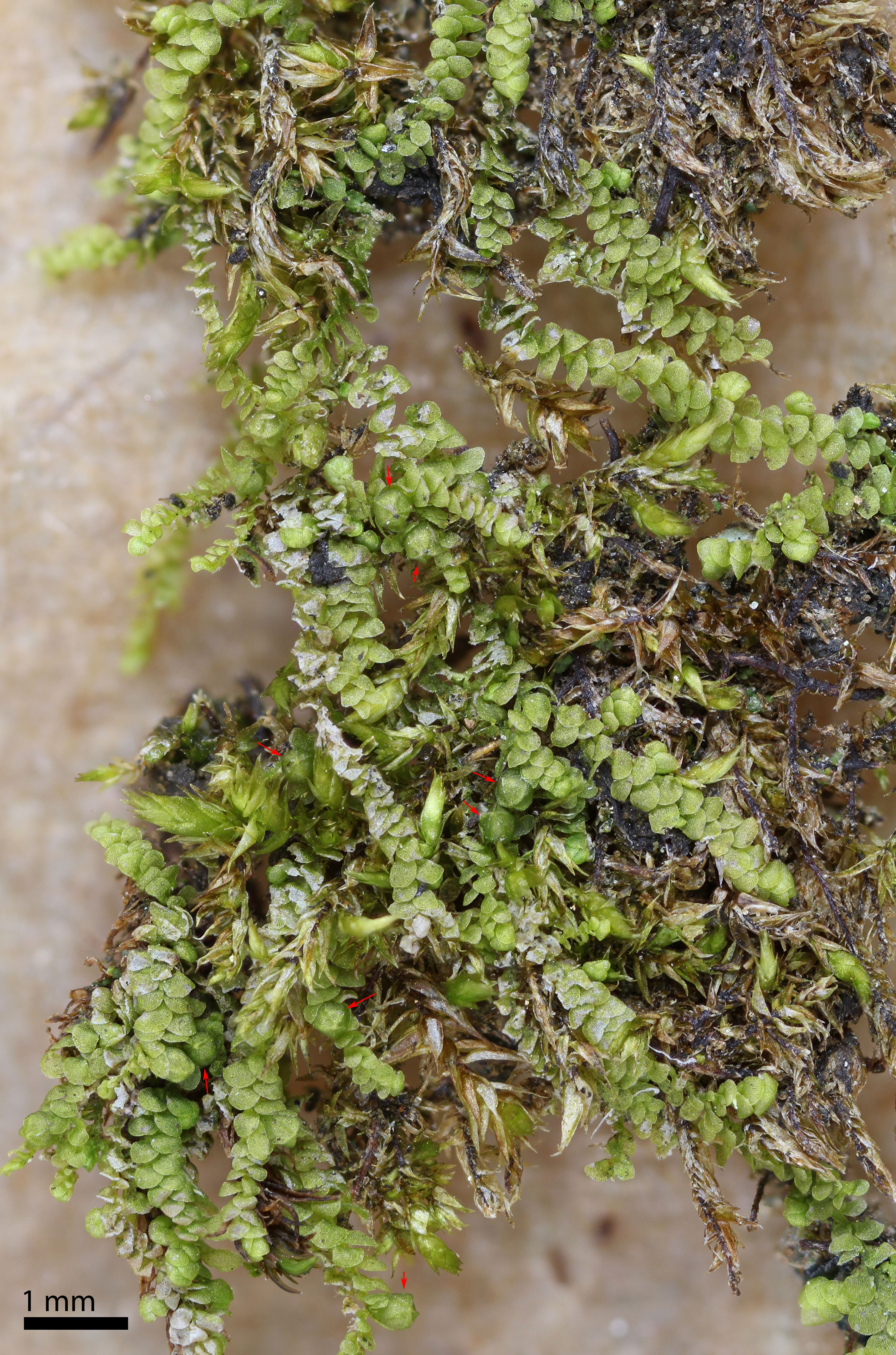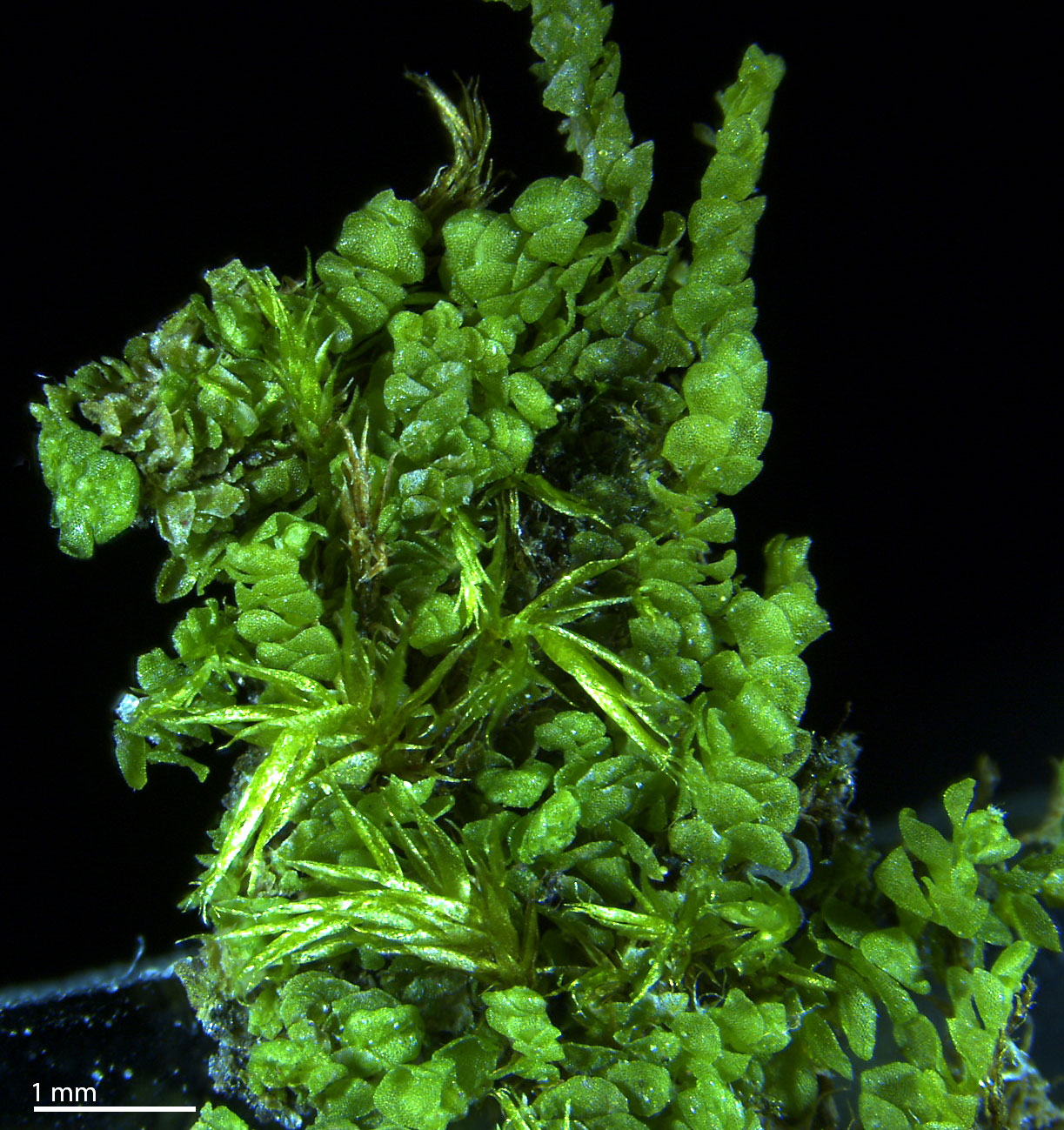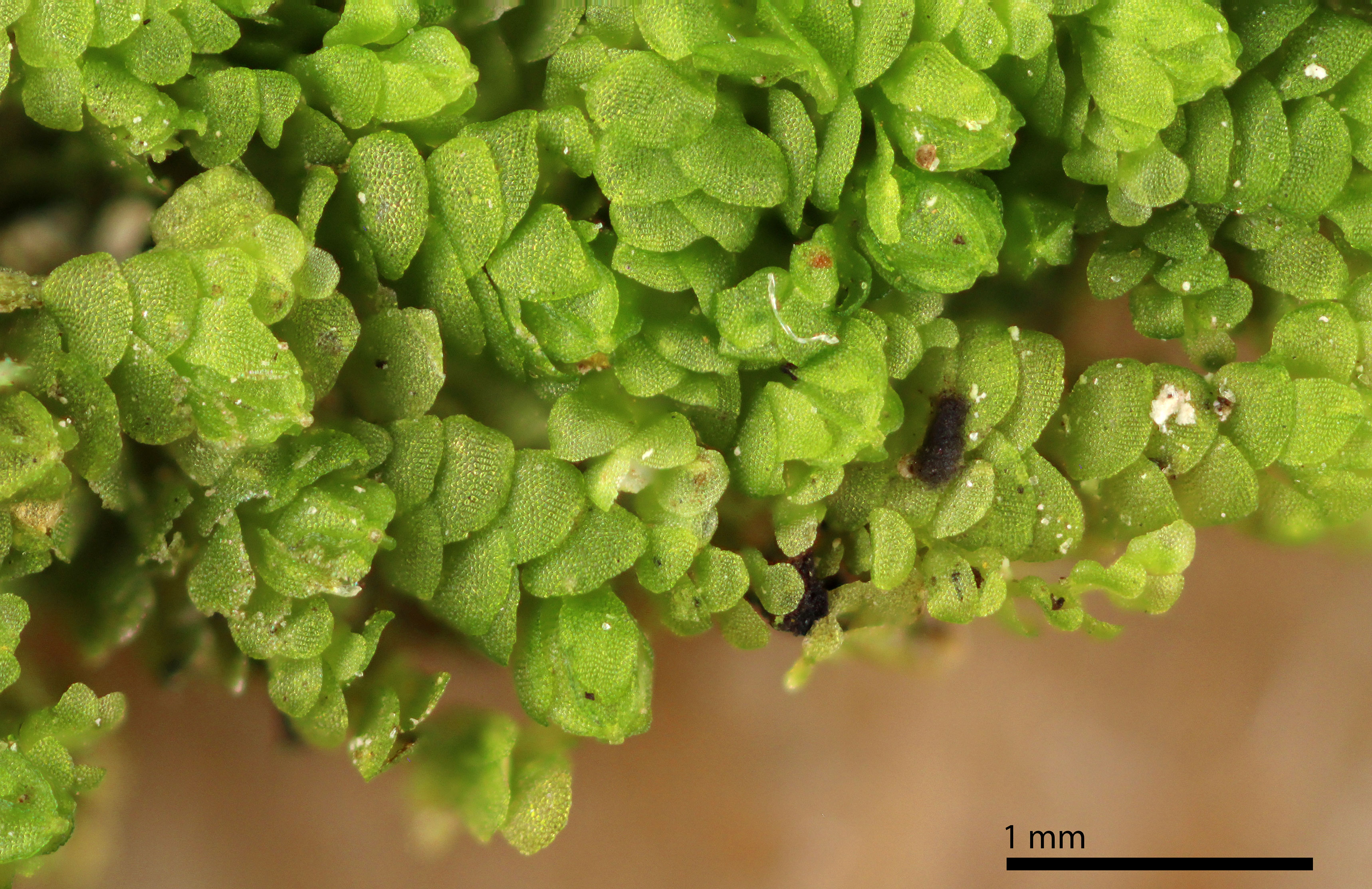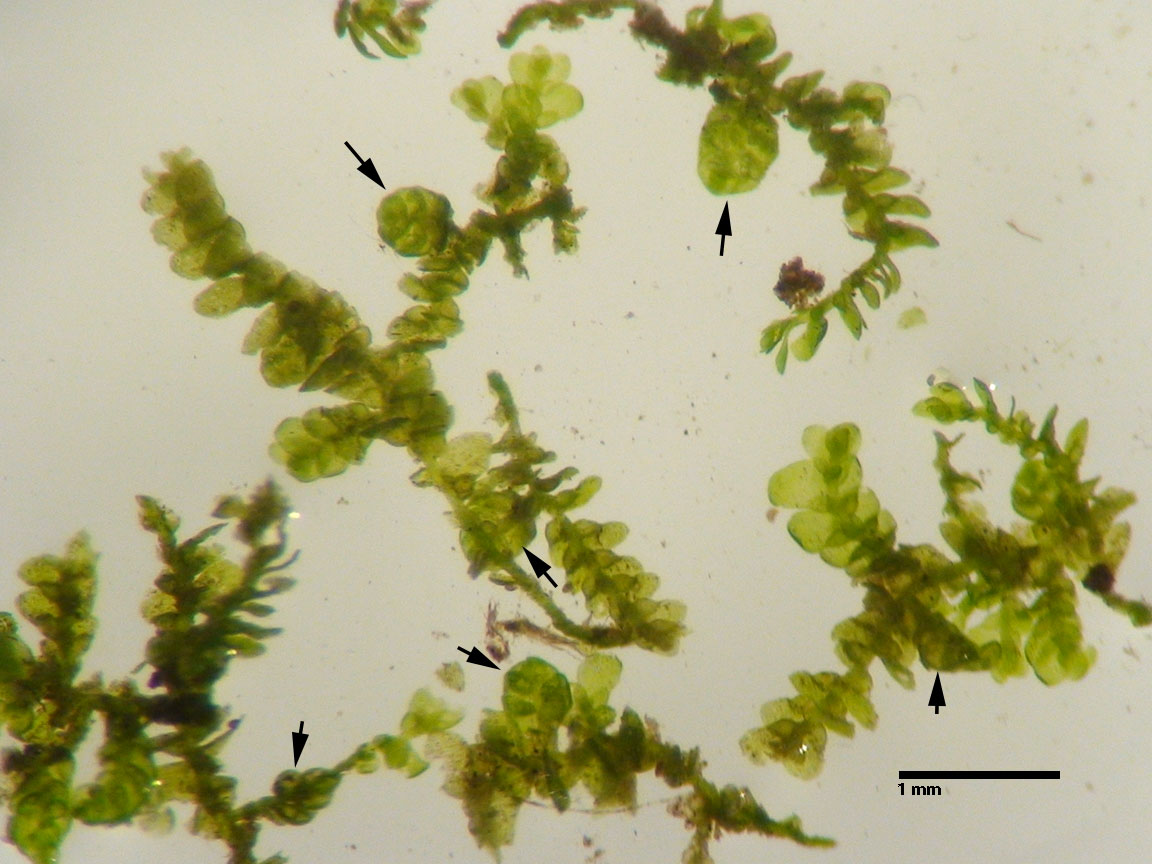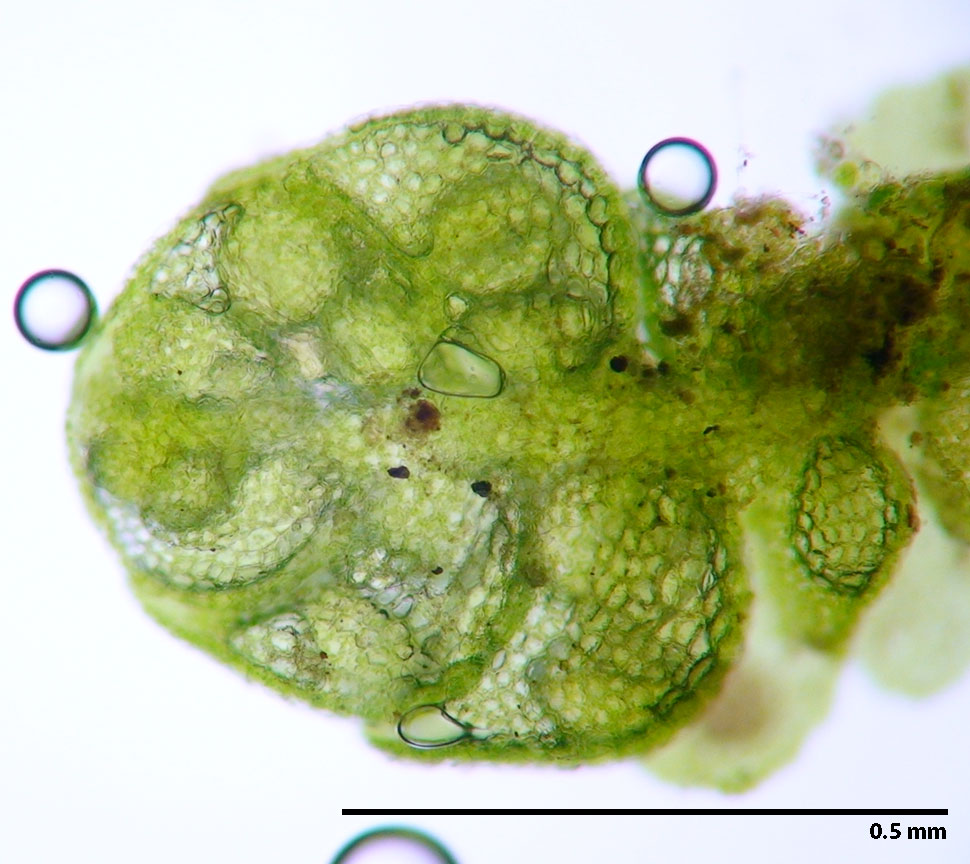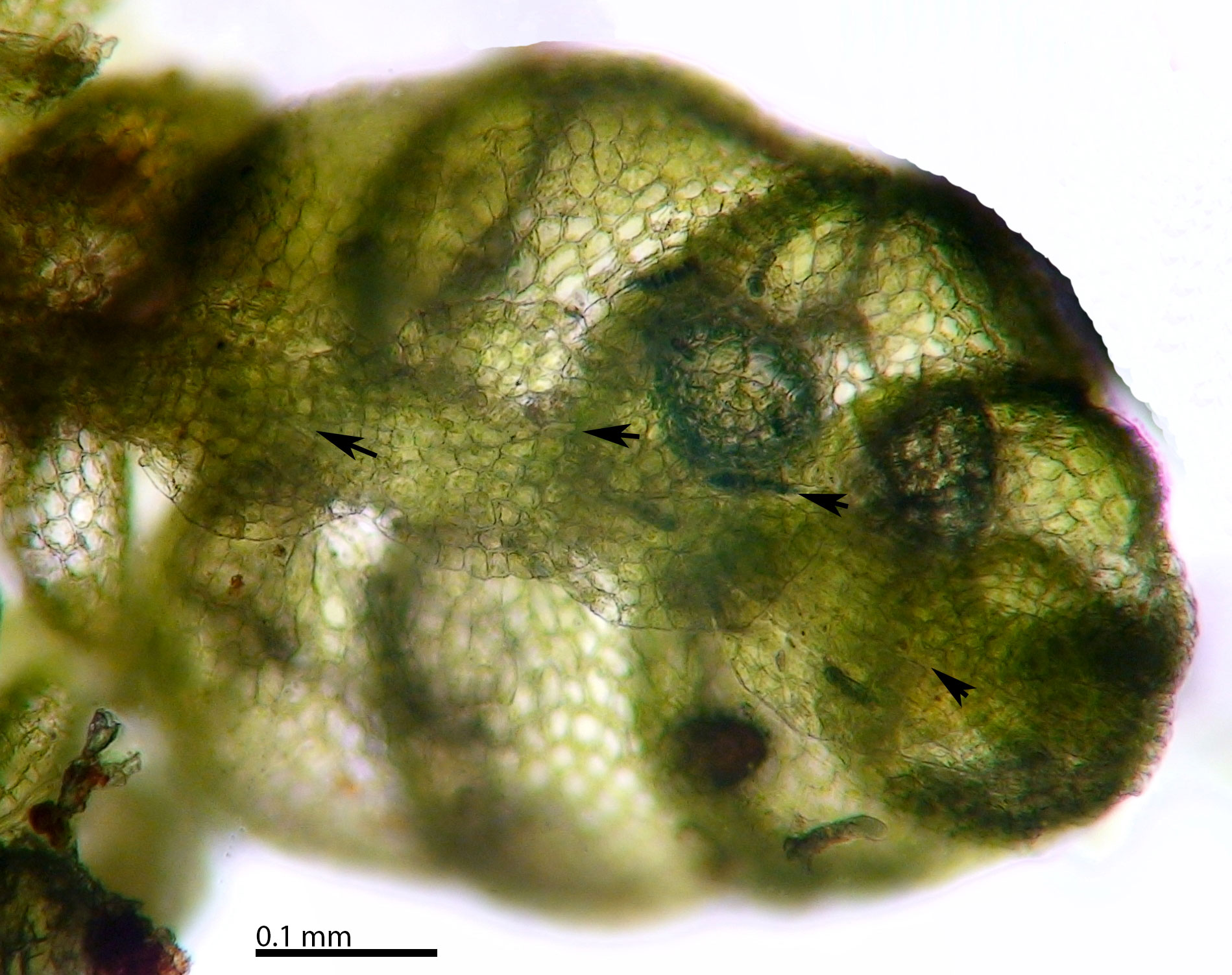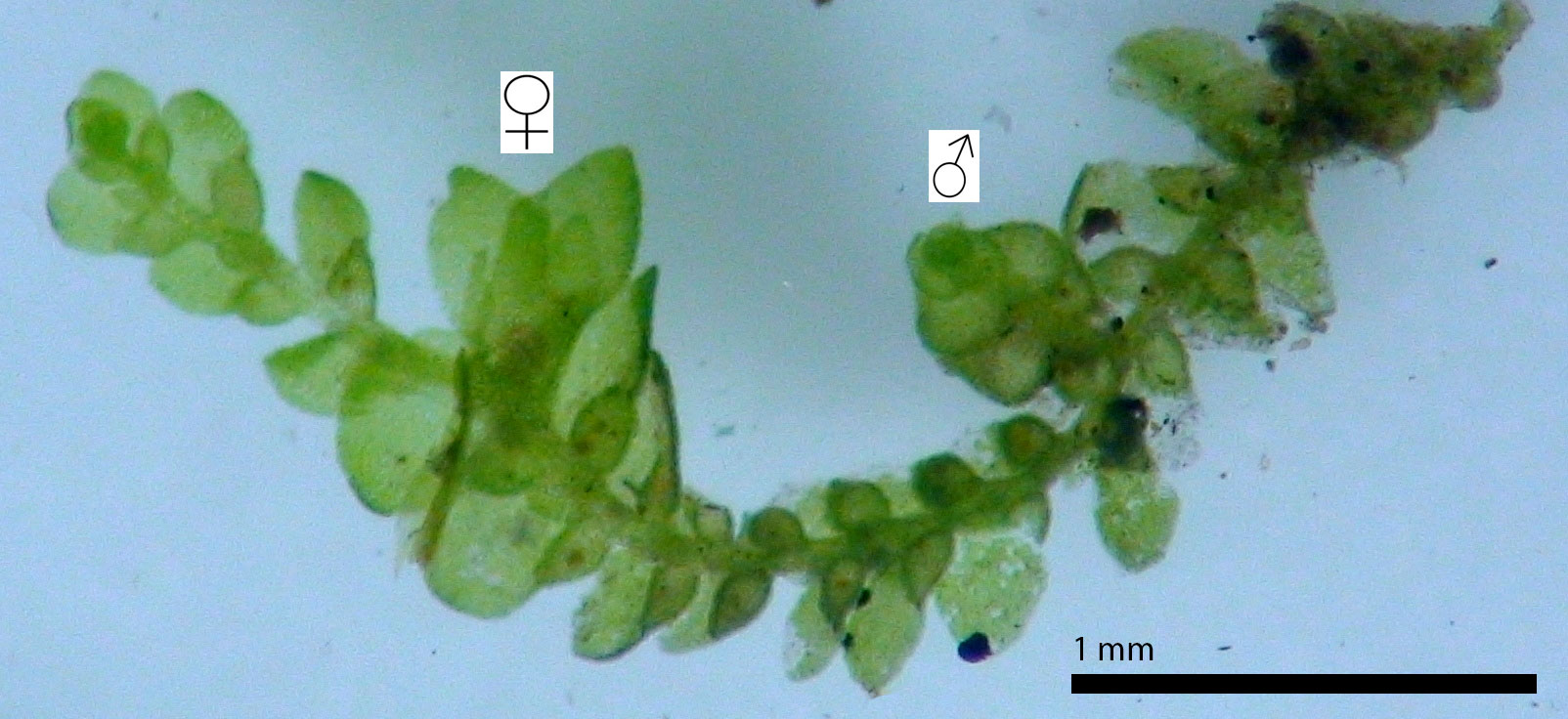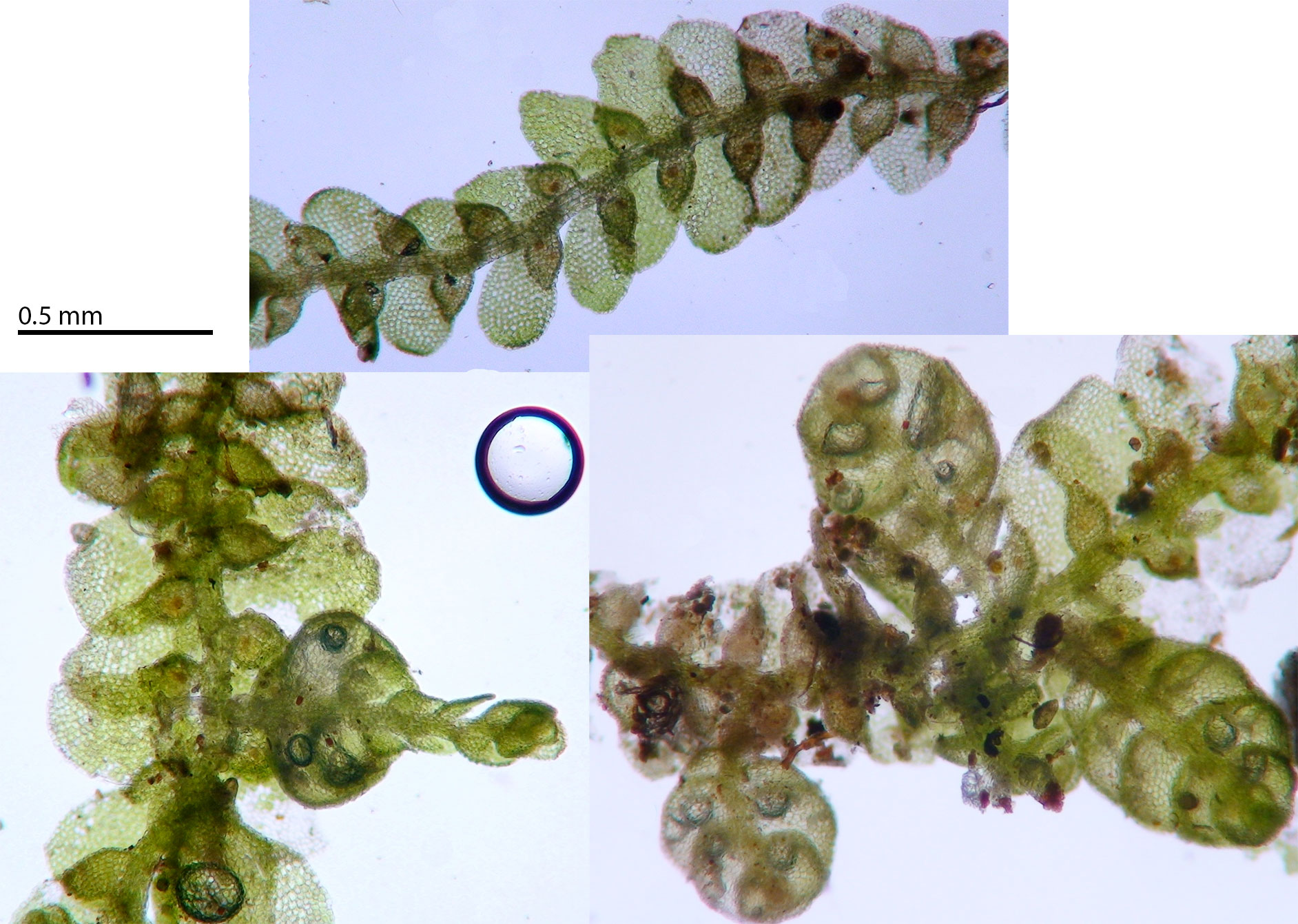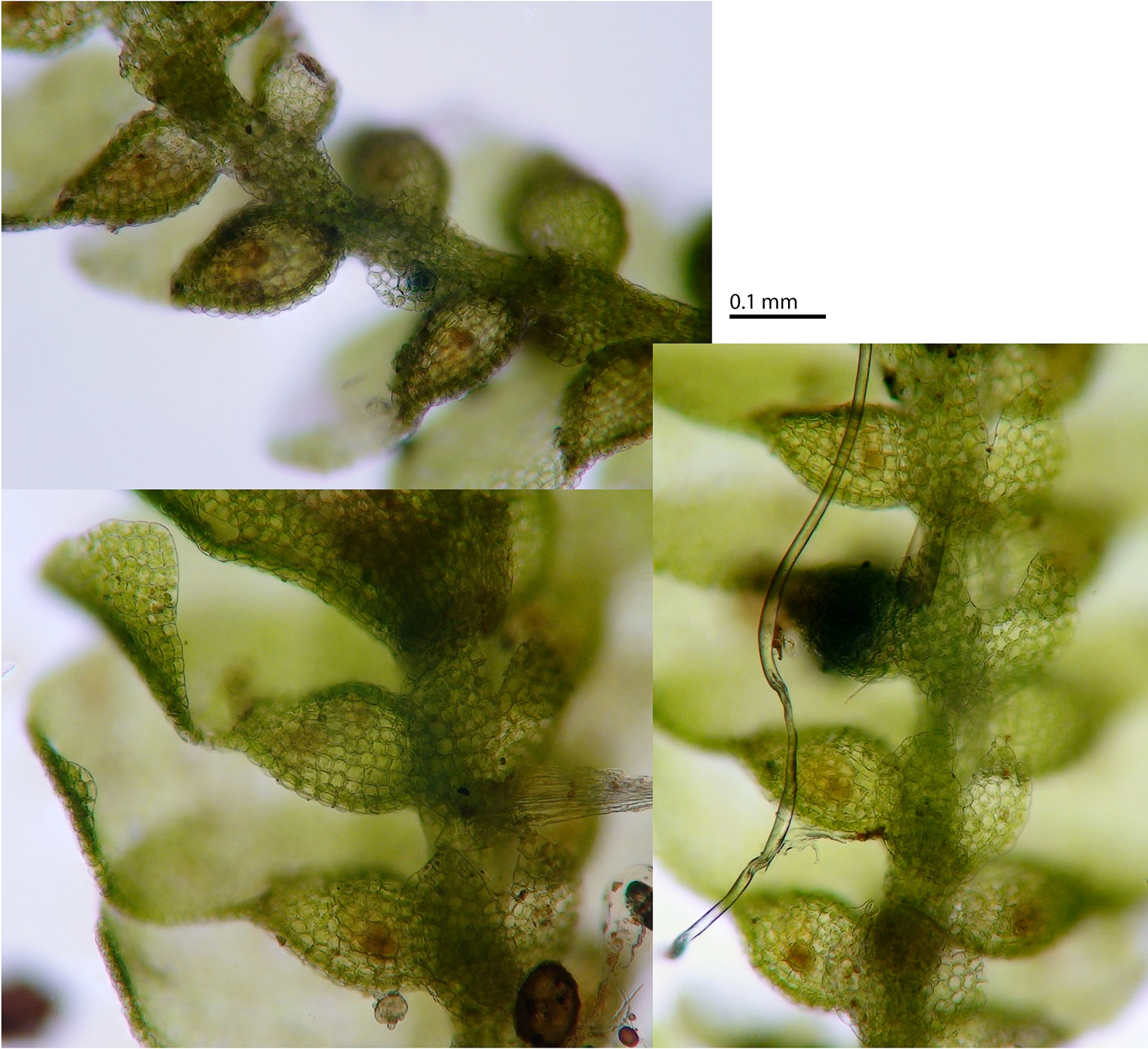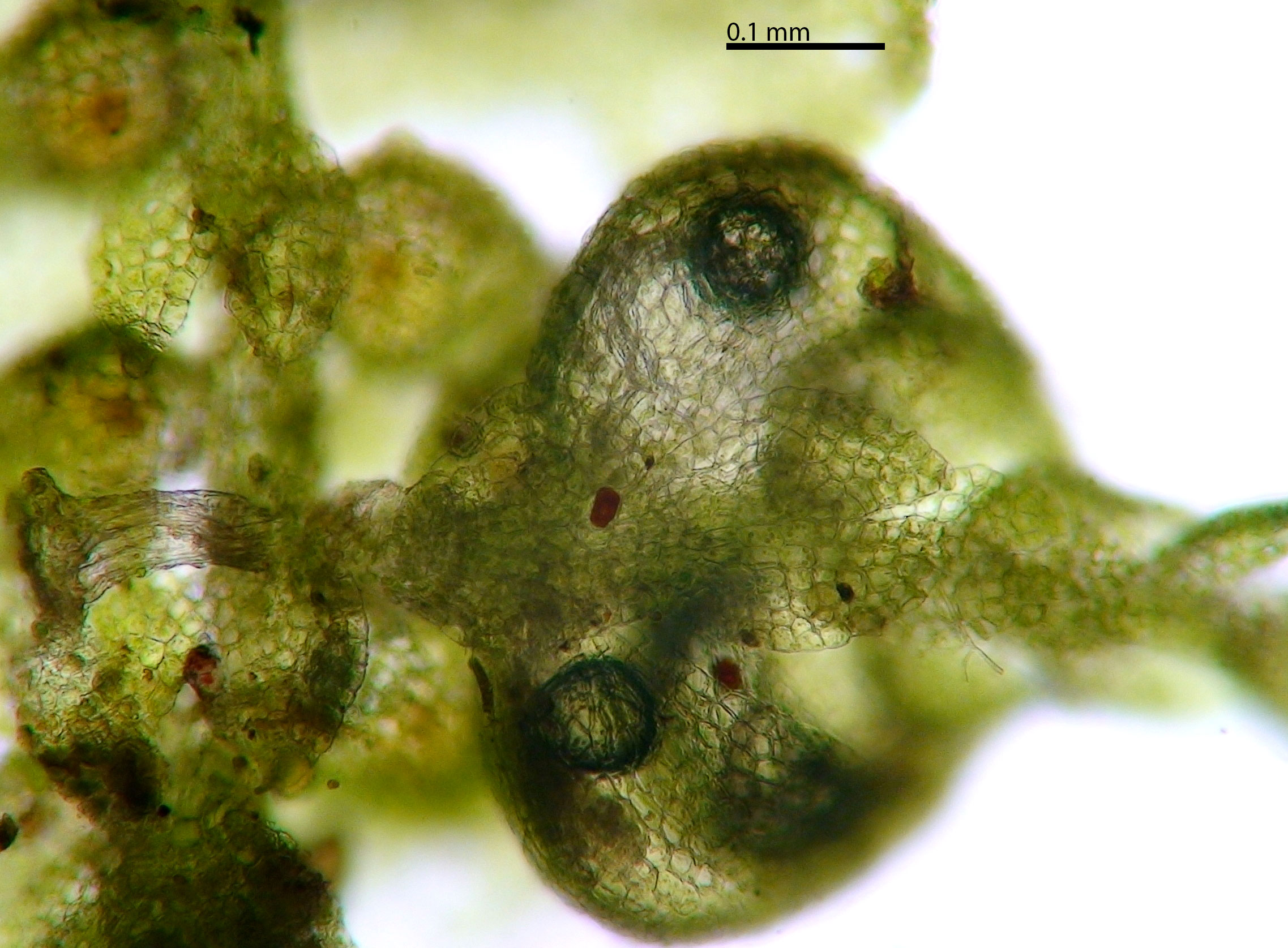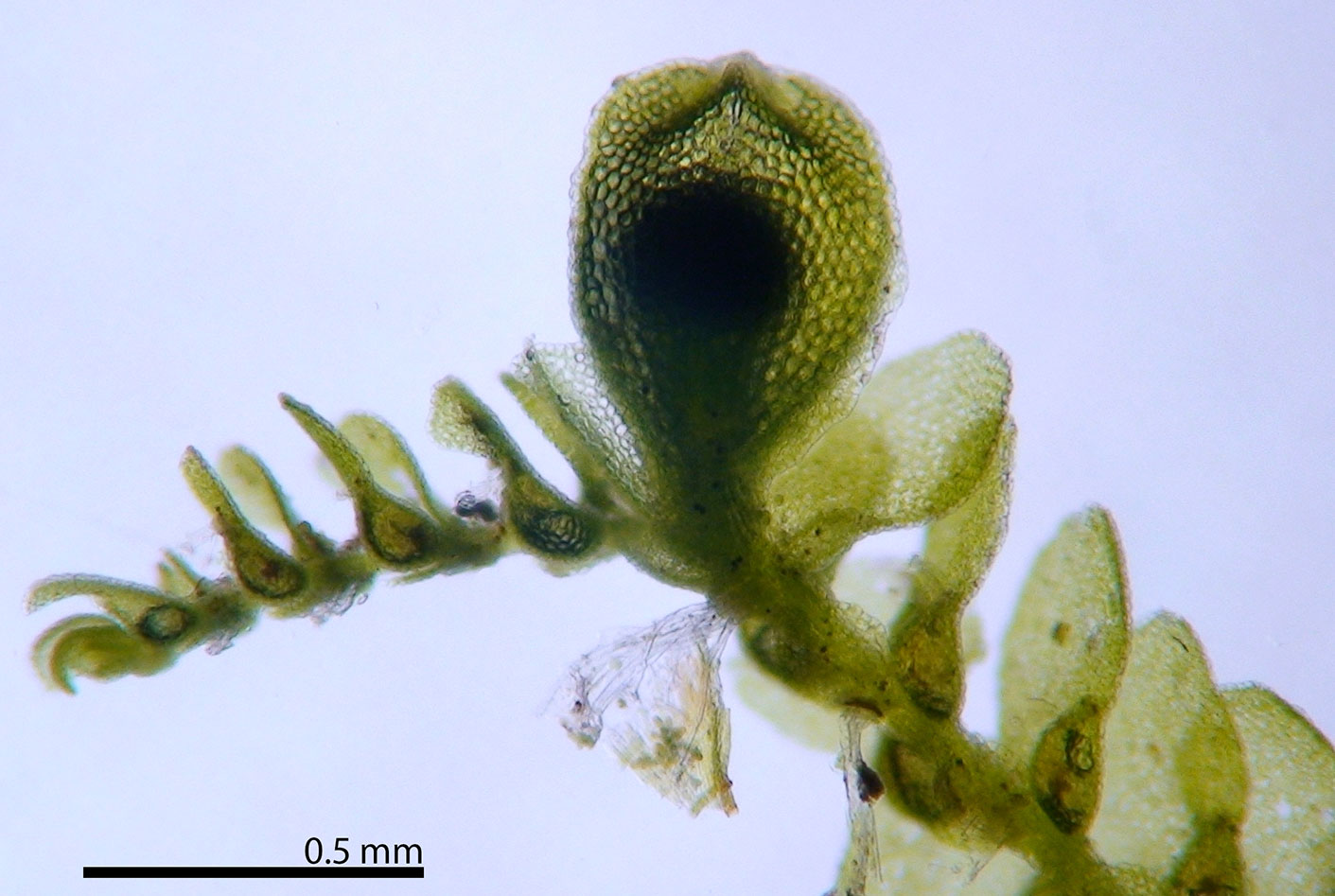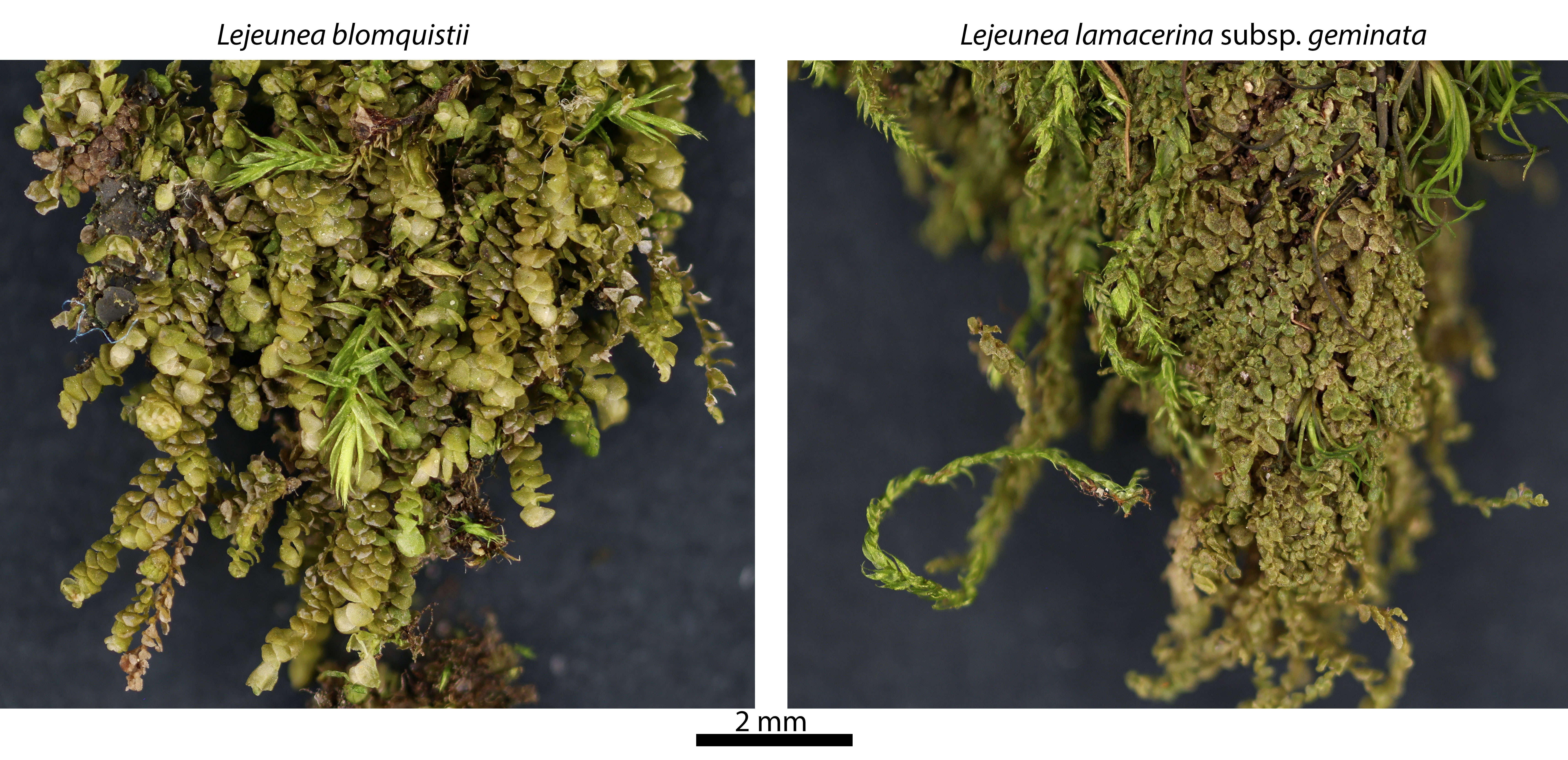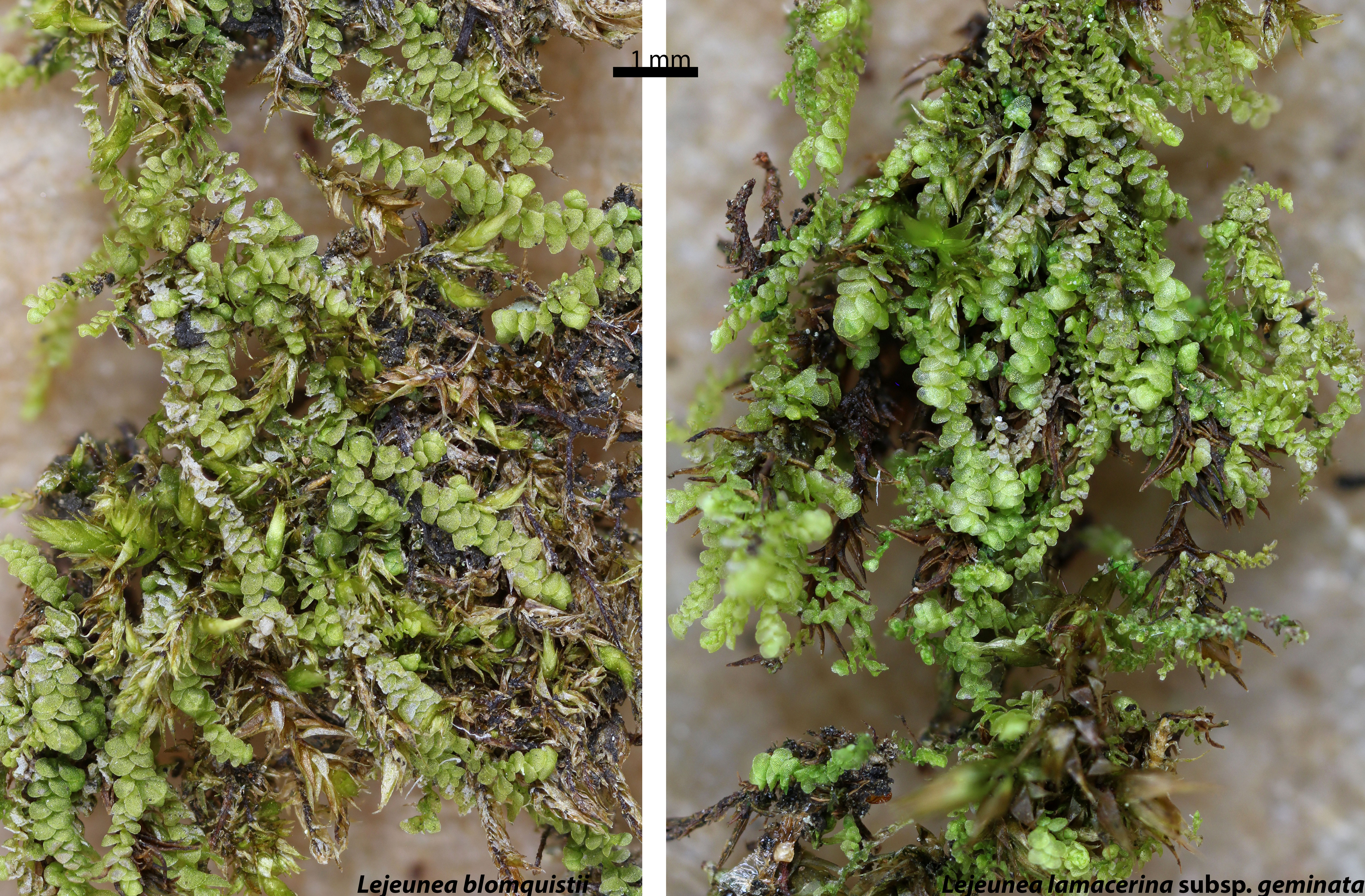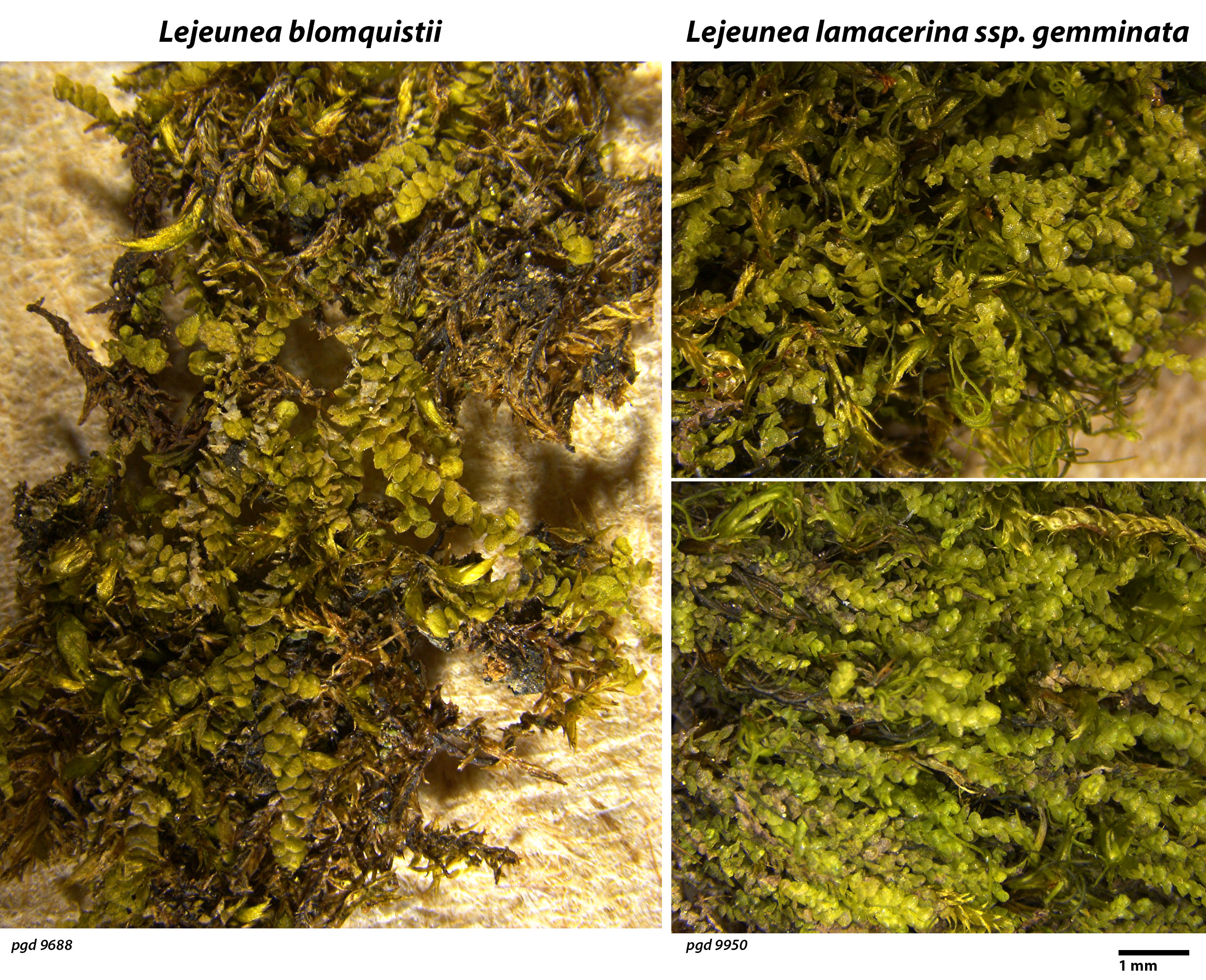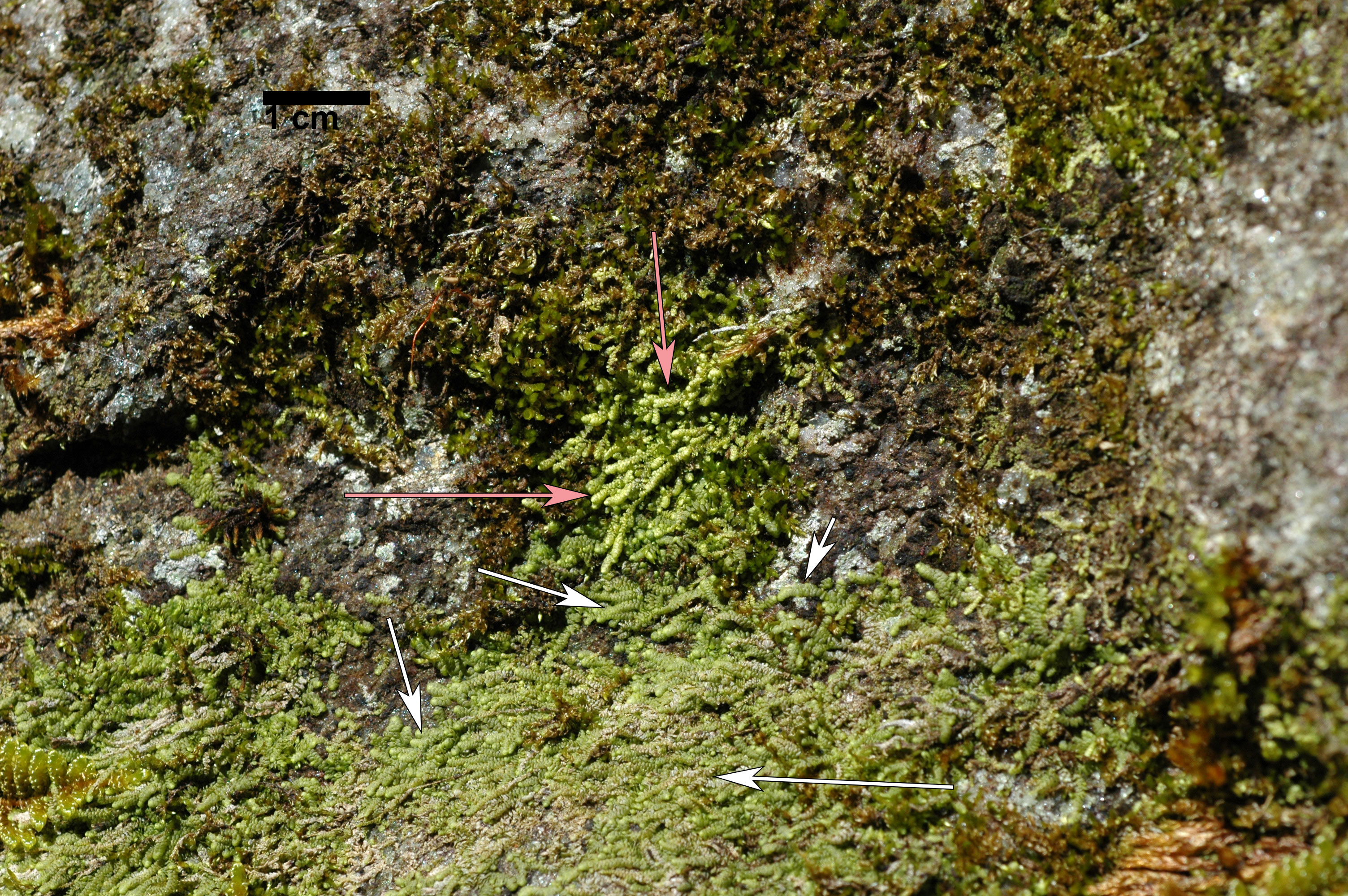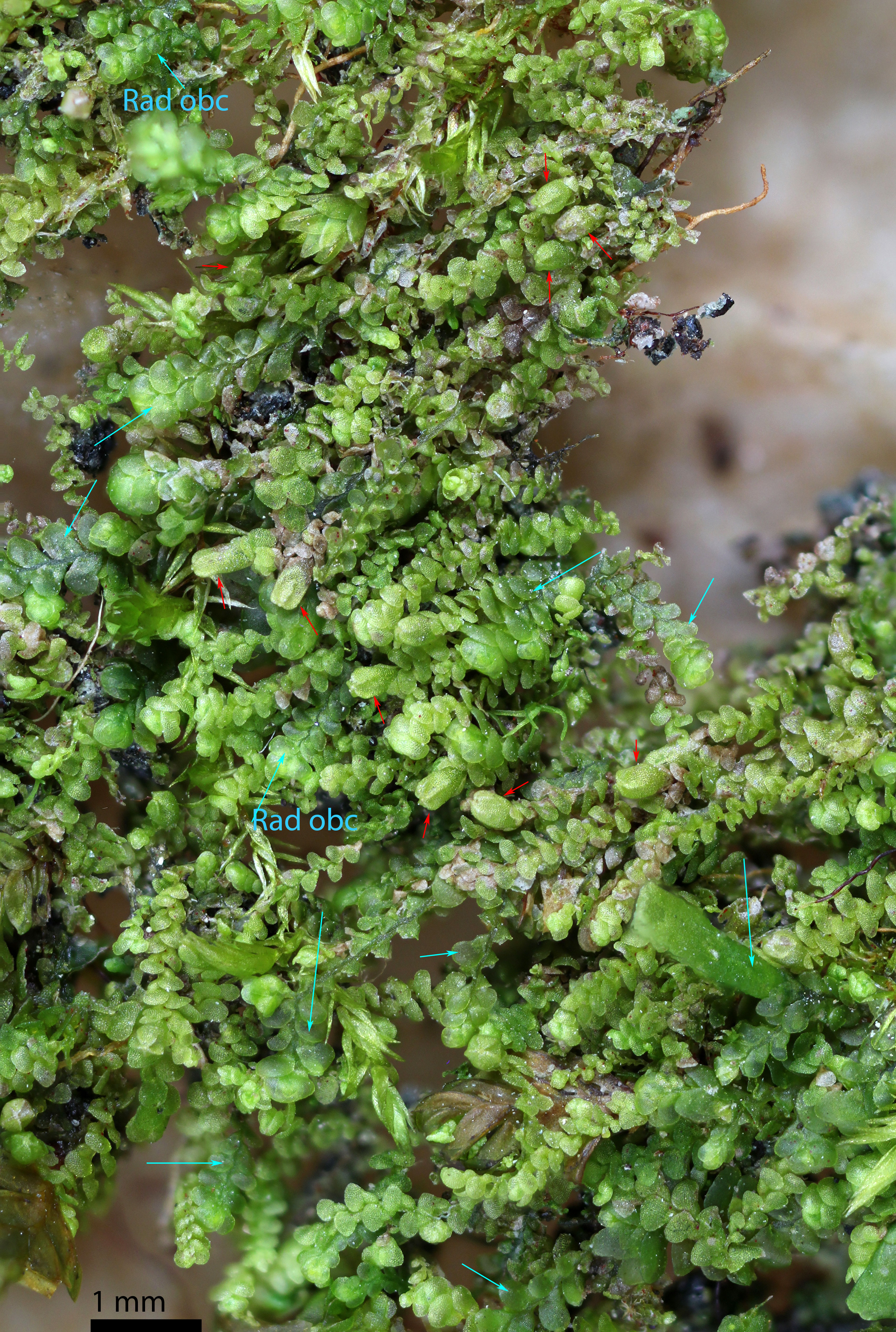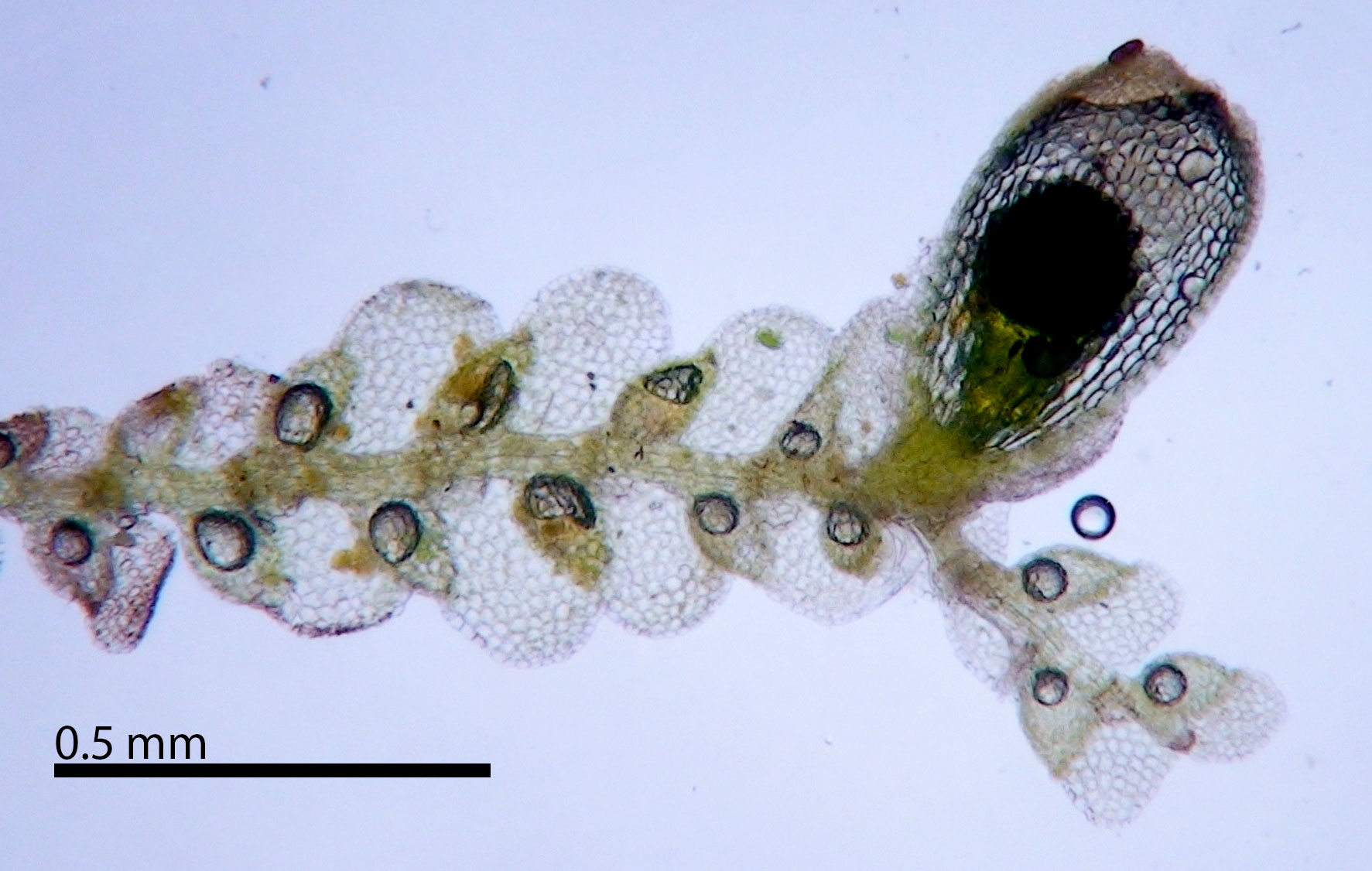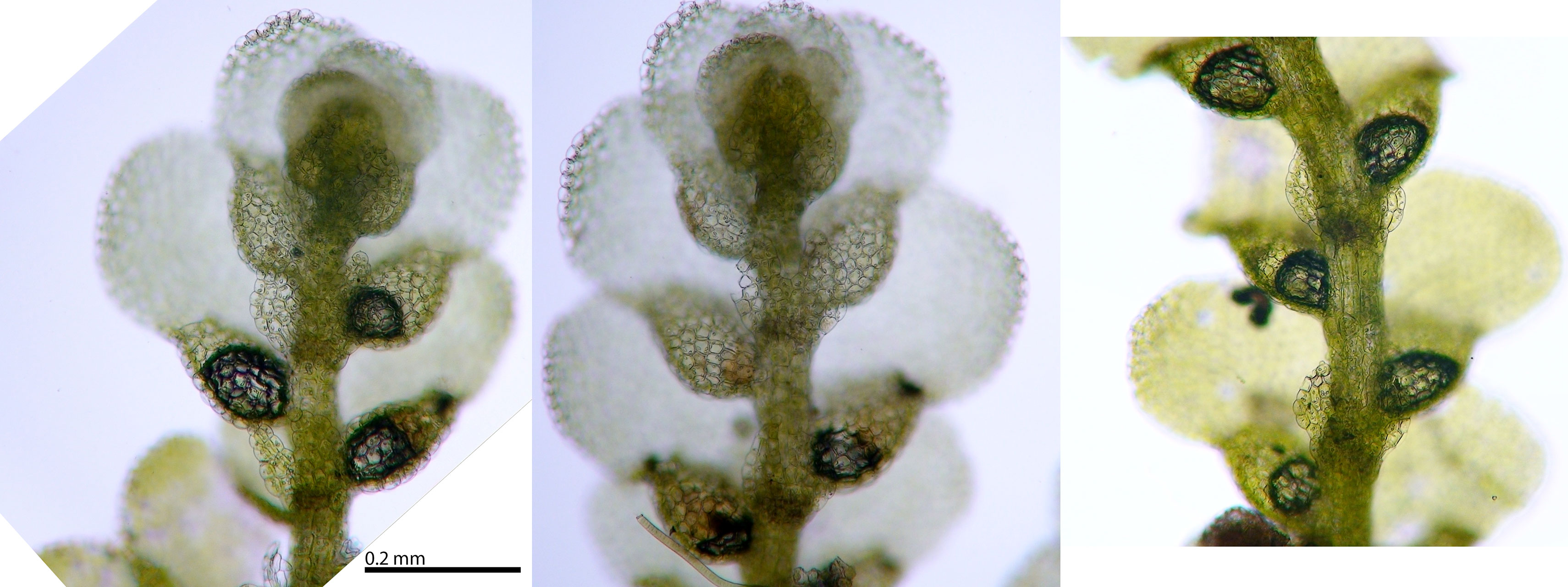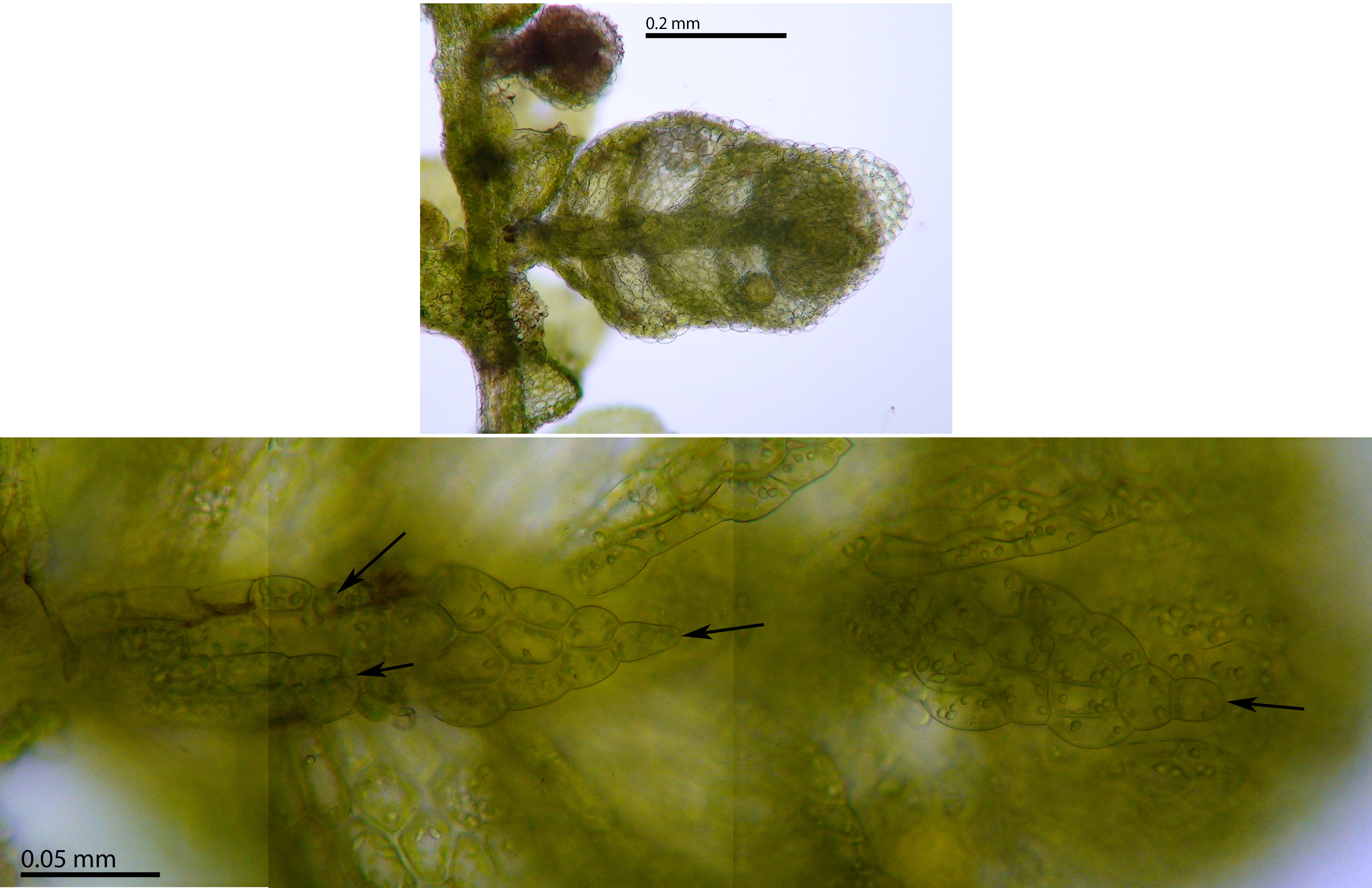Lejeunea blomquistii R.M. Schuster
Family: Lejeuneaceae
Synonyms
none
NatureServe Conservation Status
G1G2
Distribution
Endemic to eastern North America. U.S.A. Alabama, Kentucky, Georgia, North Carolina, South Carolina, Tennessee, Virginia, West Virginia. Apparently restricted to the Appalachian Plateaus and Blue Ridge physiographic provinces. As recently as 2017 the species was reported to be known from only two locations (Stotler and Crandall-Stotler 2017; Schuster 1980). The accumulated data of critical collections made over the last 25 years (summarized in the distribution map) shows Lejeunea blomquistii to be far more common than previously thought (see also Davison et al. 1992; Gross and Risk 2000).
Habitat
In forested stream ravines with mixed hardwoods often with Tsuga canadensis; also in northern hardwood forests in boulder fields on mountain slopes; moderate elevations (650 ft. - 4200 ft.).
Lejeunea blomquistii is restricted to areas of high humidity with some sun exposure. Typically occurring on “dry” rock (tops and sides of exposed boulders) in streams or along stream banks but occasionally on rocks some distance from streams. While the species may occur in close proximity to spray cliffs or waterfalls, it occurs beyond splashing water. It often grows on the dry surfaces of large boulders in wide streams where it receives ample sunlight and may be subject to rare periods of inundation during periods of flash floods.
Occurring most frequently on rock, often standstone, not known to occur on limestone; rarely on bark of trees. The paratype from Rabun Co., Georgia, was collected from the bark of a dead, fallen tree. In Kentucky and Tennessee, the species was found on Platanus occidentalis. In Van Buren Co., Tennessee, where the species was otherwise very abundant on rock, it was found on two tree bases (a Liriodendron tulipifera and a Betula lenta), and the bark of a log. Of the 120+ collections known (many included in the Consortium of North American Bryophyte Herbaria, http://bryophyteportal.org ) only six came from bark.
The most frequent associates growing in contact with Lejeunea blomquistii on rock: the moss Sematophyllum demissum, and the liverworts Leucolejeunea clypeata and Radula obconica. Other, less common associates on rock, growing intermingled with, or within a few centimeters of, L. blomquistii include Lejeunea lamacerinaa subsp. geminata, Lejeunea sharpii, Lophocolea heterophylla, Cololejeunea biddlecomiae, Metzgeria spp., and Scapania nemorea. From the type specimen from “vertical face of relatively exposed boulder,” occurring with Anomodon attenutus, Rhacomitrium heterostichum (apparently=Bucklandiella venusta), Cololejeunea biddlecomiae, and Metzgeria crassipilis (Schuster 1980).
Brief Description and Tips for Identification
Small, leafy liverwort growing prostrate in patches (thin mats) generally of a few square centimeters in diameter. Individual shoots (leaves and stem) up to 1 mm wide, usually smaller. Leaves complicate-bilobed, the dorsal lobe apex rounded, often less rounded and narrowed at the apex. Leaf lobes convex and distinctively elevated above the stem with apices often deflexed. Leaf lobules always inflated. Underleaves bilobed. Plants not shiny or only slightly so, typically an opaque, dull green. Living cells of the leaves possess granular oil bodies numbering 2-5, rarely up to 10 in cells at the leaf base.
Monoicous and evidently self-fertile. Capsules not yet dehisced occurred in material collected in April and dehisced capsules in material collected in April, May, and July, so presumably spores are released late spring through summer. Perianths and androecia are discussed below.
Perianths are not as elongate as those of the very similar Lejeunea lamacerina subsp. geminata. Perianths are described as “obovoid” and “narrowly obovoid” for the two taxa respectively (Schuster 1980). Both taxa have perianths with 5 keels and a short beak. Perianths of L. blomquistii appear decidedly more globose than the almost subcylindrical perianths of L. lamacerina subsp. geminata.
Perhaps the single most important character to confirm when identifying L. blomquistii is the androecium with well developed bracteoles (underleaves) present throughout (i.e., bracteoles occur from the base to the apex along the ventral side of the androecium). Among regional Lejeunea, only the very different L. laetevirens shares this androecial character. Androecia of L. laetevirens are apparently unknown within the geographic range of L. blomquistii (Appalachian populations of L. laetevirens are “uniformly sterile,” Schuster 1980, p. 1099).
Lejeunea blomquistii must be separated with care from L. lamacerina subsp. geminata. Aside from the fact that androecia of L. lamacerina subsp. geminata have bracteoles only at the base of the androecium (or sometimes with weak, poorly developed bracteoles extending nearly throughout the androecium), other character differences (e.g. size and shape of underleaves and lobules, color and texture of mats, shape of perianths) are more subtle.
Plants of Lejeunea lamacerina subsp. geminata are rather shiny in contrast to the dull green plants of L. blomquistii. Underleaf shape is similar between the two species with minor distinctions in the shape of the sinus between the two lobes of the underleaf. In L. blomquistii the sinus between the lobes of the underleaf is V-shaped, while in L. lamacerina subsp. geminata the sinus varies from V-shaped to U-shaped.
Leaf lobes of L. blomquistii tend to be strongly convex with deflexed apices. The leaf lobes are typically elevated above the stem (i.e. they do not lie horizontally flat atop the stem). These tendencies are not strongly developed in L. lamacerina subsp. geminata.
Lejeunea sharpii and Lejeunea cavifolia differ from L. blomquistii in having numerous, small, glistening oil bodies. Morphological differences exists in leaves and underleaves but these can be difficult for novices to appreciate. It is good practice to check oil bodies in Lejeunea specimens before the plants die and oil bodies disappear.
Androecial branches can almost always be found in specimens of L. blomquistii, and the presence of well developed bracteoles throughout the androecium should always be confirmed.
Salient Features
- Bracteoles present throughout the androecium
- Plants dull green
- Leaf lobes convex, apices deflexed
- Leaf lobules always inflated
References
Davison, P.G., D.K. Smith, and K.D. McFarland. 1992. [Abstract] Little known liverworts of occurrence in the southern Appalachians. Association of Southeastern Biologists Bulletin 39:103.
Gross, B. E. and A. C. Risk. 2000. [Abstract] Bryophyte and vascular flora of Hi Lewis Barrens State Nature Preserve, Harlan County, Kentucky Association of Southeastern Biologists Bulletin 47: 168.
Schuster, R. M. 1962. North American Lejeuneaceae VII. Lejeunea (Lejeunea) blomquistii sp. nov. Journal of the Elisha Mitchell Scientific Society 78(1):64-68.
Schuster, R.M. 1980. The Hepaticae and Anthocerotae of North America East of the Hundredth Meridian. Volume IV. Columbia University Press, New York.
Stotler, R. E., and Crandall-Stotler, B. 2017. A synopsis of the liverwort flora of North America north of Mexico. Annals of the Missouri Botanical Garden, 102(4), 574-709.
Acknowledgment
Some text and images on this page were originally prepared for the Georgia Department of Natural Resources in 2010, contract number 605-090427 with Paul G. Davison and used here with permission.
Habitat
Habitat
Habitat
Habit
Morphology
Morphology
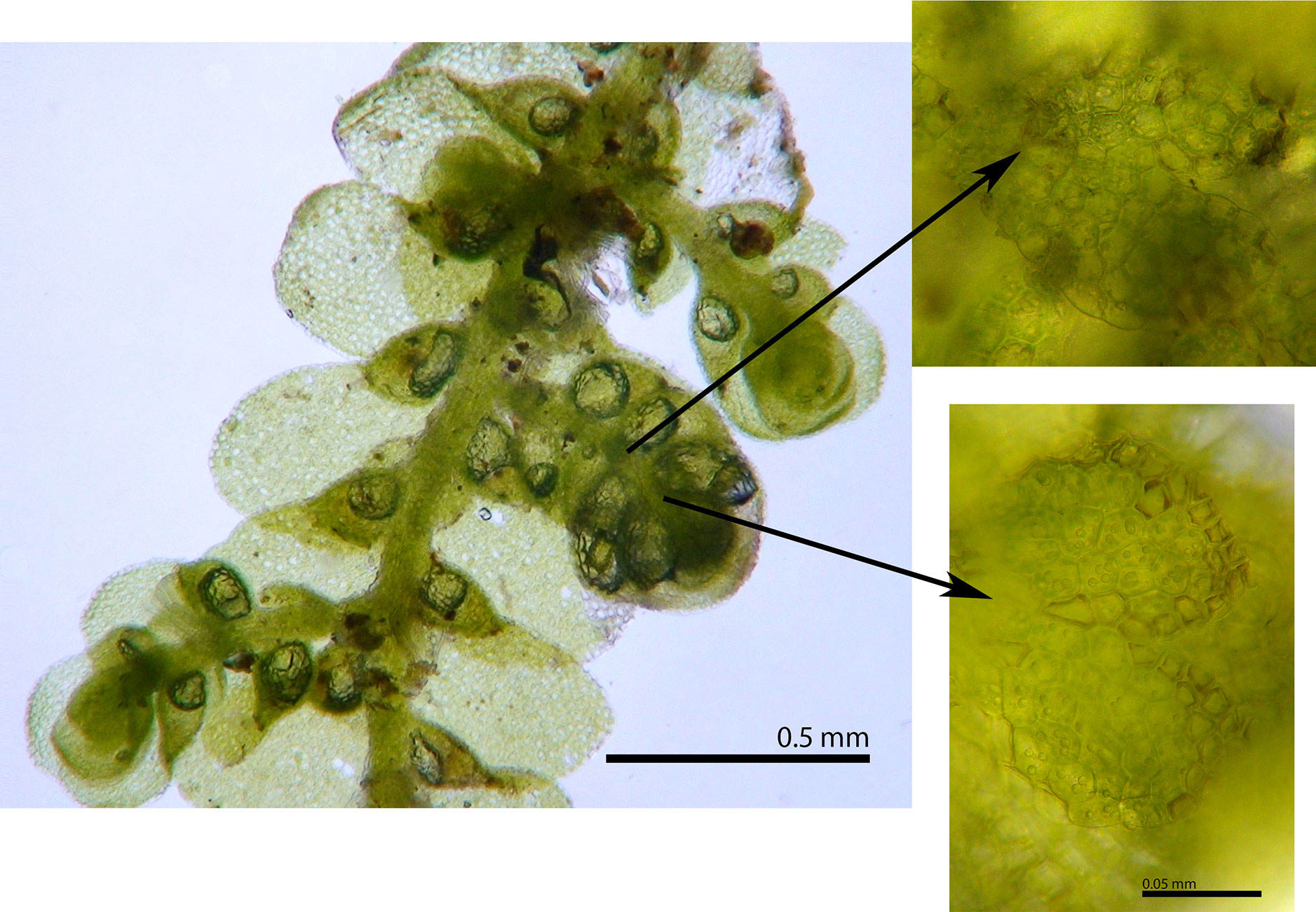
Lejeunea blomquistii
The arrows indicate the points on the androecium from which the bracteoles, seen in insets to the right, occur. Bracteoles photographed using the 40x objective. Learning to see the bracteoles is a practical matter that requires some sharp perceptions on the part of the observer.
